Proudly Serving the Agricultural, Gardening, Landscaping & Nursery Communities







A selection of apples from Melick’s Town Farm. At the bottom are Gala apples. They are striking bright yellow-red colored apples, with a mild sweet flavor. Very juicy. They have a crisp, creamy yellow flesh. In the middle are Blondee apples. They are a clear yellow apple with smooth skin. It is a slow-browning apple when sliced. Its flavor is both sweet and tart with a firm, crisp flesh. At the top are Macoun apples. They are a medium to large-sized apple, deep red over a green base. Extra-sweet and aromatic. Very juicy, with a tender, snow-white flesh.
By Peter Melick Agricultural Producer The Town FarmerApples have been growing here in New Jersey since the first settlers arrived from Europe in the 1600s. Unlike certain varieties of grapes,
berries and plums, apples are not native to North America and all varieties had to be imported. Because apples have certain characteristics
that other fruits do not, colonists were very eager to get some small orchards established.
First of all, unlike other
fruits, apples, even without refrigeration, can be stored for months at a time. This would make them extremely valuable to (Cont. on Page 6)
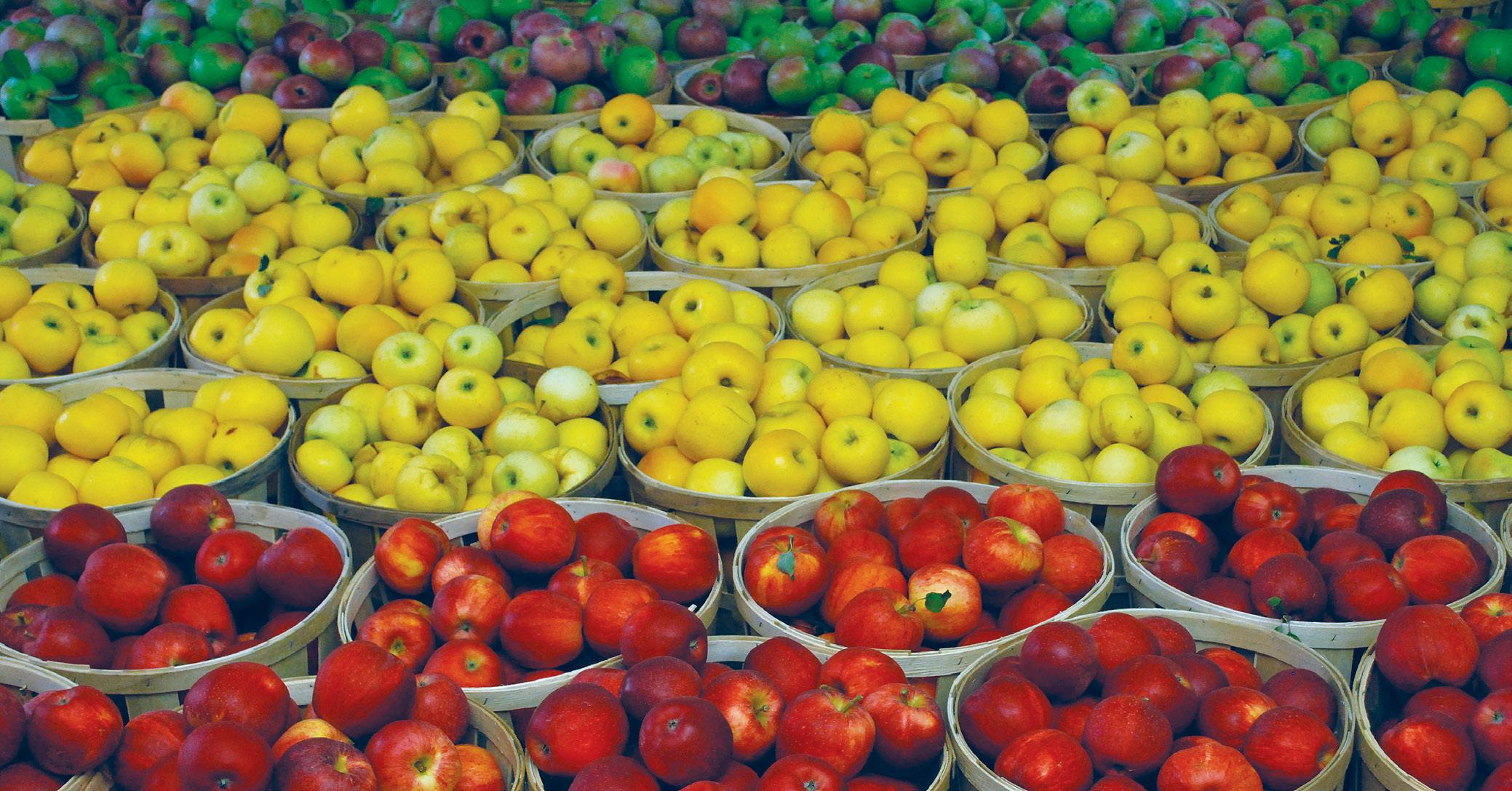


During the month of September, I visited the Pine Island hamlet in the town of Warwick in Orange County, New York.
Pine Island gets its name from its slight elevation over the surrounding land.
The hamlet I visited is the largest community in the Black Dirt Region, which is famous for its black dirt yellow onions, the crown jewel crop.
I can’t believe that some of North America’s most magical fertile soil lies a 90-minute drive from my home in central New Jersey.
This Black Dirt Region in New York takes its name from the dark soil left over from an ancient glacial lake bottom. History says the dirt is the result of an ancient glacial lake bottom augmented by decades of flooding of the Wallkill River. I’m told the Black Dirt stretches 26,000 acres, making it the largest concentration of such soil in the United States outside of the Florida Everglades.
This unique flat valley also formed from the decay of plants over thousands of years.
The first thing I saw when I entered the region were massive, flat, black dirt fields, incorporated with lush produce, and majestic mountains in the far distance. There were networks of deep drainage ditches that were filled with water, and farm roads with raised dry land popping up like islands. I guess that is why they call it Pine Island.
The black dirt brought me back to my landscaping days when I had sod delivered from north Jersey. The sod was grown in a town called Great Meadows in Warren County, which is also a fertile organic black dirt region, but not as large as New York’s.
I was there right in the middle of the harvest. As I drove down the main road that separated the fields, there were really cool looking dump trucks with wheels in the front and giant bulldozer tracks in the back. I assume the tracks help these trucks from getting stuck when fully loaded. Further down the road one of these trucks entered the roadway, right in front of me, fully loaded with yellow tennis ball-sized onions. The tracks deposited black dirt all over the road. I just washed my SUV earlier. Great! Now I’m going to have black dirt all over my wheels. Much to my surprise, it was almost like driving through wet peat moss. No mess. Boy, was I a happy camper.
I learned that in the early 1900s, German, Polish and Dutch immigrants did the work of draining the swamp bogs with a network of ditches. These efforts exposed a sulfur- and
nitrogen-rich black soil that in some places is 30 feet deep.
The tennis ball-sized yellow onions with papery skin that we are all familiar with thrive in the black dirt. The sulfur in the dirt increases the sugar content in onions and gives them a delicious, strong, rich onion taste.
It’s not just onions that grow well in black dirt. All the root vegetables (beets, carrots, garlic, radishes) love to grow deeply down into that rich growing medium. Lettuce of all types, kale, kohlrabi, and cabbages also thrive as well.
I also spotted soybeans in the fields as I slowed down to a crawl while driving down the road. I even spotted a few sod farms.
Vegetable plants are not the only things that farmers are pulling out of the black dirt. As a testament to what was once a robust prehistorical world in the lower Hudson Valley, there has been an abundance of fossils found. There are actually three distinct geological layers in the area: the deepest level is clay, the middle level is a mix of peat and clay, and the black dirt makes up the top layer. Back in school I remember being taught in science class that Peat bogs are famous for preserving artifacts and fossils.
According to the Orange County Cooperative Extension Service, the soil also boasts 30 to 50 percent and sometimes up to 90 percent organic matter. I look at it as a massive powdery compost field.
After my drive down the Pulaski Highway, which divides the fields, I stopped at a really nice Italian restaurant for dinner. After dinner I hopped back on the Pulaski Highway heading back to Warwick, with the mailing address of Goshen. I pulled off into a little development to look up at the stars to view what was maybe the Milky Way peering through my windshield. As I got out of my car in almost total darkness I looked up. There were massive amounts of stars visible. Then, I turned off my headlights for uninterrupted darkness. There it was, the largest and most massive star cluster showing off in the sky. It was milky white with a roughly spherical appearance. It also had a hazy colorful appearance as I walked around my car. I have to tell you that I had to hold onto my car because I was getting dizzy with my head staring up into space. I was looking at the Milky Way. It was well over 30 years ago that I last saw it. There is way too much light pollution in my neck of the woods to view it where I live.
Mother Nature was at its best that day. Thank you!
Editor’s Note: Tom Castronovo is executive editor and publisher of Gardener News. Tom’s lifelong interest in gardening and passion for agriculture, environmental stewardship, gardening and landscaping, led to the founding of the Gardener News, which germinated in April 2003 and continues to bloom today. He is also dedicated to providing inspiration, and education to the agricultural, gardening, landscaping and nursery communities through this newspaper and GardenerNews.com.

Gardener News is the leading Agricultural, Gardening, Landscaping and Nursery industry publication, both online and in print, in the New Jersey metropolitan area.
Gardener News is written by amazing, credentialed industry professionals, industry leaders and brilliant industry specialists.
Gardener News covers local, national and regional farming, forestry, horticultural, landscaping and outdoor industry news. We also feature a wide variety of interesting reading material and great educational tips.
Gardener News is published and disseminated monthly.
*Whether you are looking to promote your business, a sale or event, celebrate an expansion, enhance your image or maintain relationships with customers, Gardener News can help meet your advertising goals. Germinated in 2003

Some people think the Garden State’s agricultural season is over when summer ends. But nothing could be further from the truth. Many New Jersey farmers and nursery owners look forward to fall, and not just for the cooler temperatures.
Visitors from across the state and the region flock to New Jersey’s farms and garden centers every autumn to get the experience of a crisp day filled with fun, food, music, and colorful fruits, hearty vegetables, and other fresh farm products.
In fact, most farms that engage in fall agritourism count on the eager crowds to help make their entire season a success and keep them going through the cold winter months. Our farms and garden centers are ready to provide some great experiences and even better “Instagram Moments.” We’ve seen people taking engagement or baby announcement photos at several of our farms, and the state’s producers are happy to be included in those lifelong memories.
Of course, there are the hayrides taking joyous groups of friends and families to the fields to select a fiery-orange pumpkin that will look great as a flickering jack-o-lantern for Halloween.
In the ever-evolving world of agriculture, the safety nets provided by government programs play a pivotal role in ensuring the stability of our farms and livelihoods. Two such essential programs are ARC (Agriculture Risk Coverage) and PLC (Price Loss Coverage). While these acronyms may sound daunting, let’s delve into their core principles and the benefits they offer to farmers.
Understanding ARC and PLC: At their core, ARC/PLC are risk management programs designed to provide financial assistance to farmers during times of economic stress. These programs recognize that unpredictable weather, fluctuating market prices, and unforeseen challenges can put agricultural income at risk. ARC/ PLC act as buffers, offering a degree of protection against these uncertainties.
ARC: Agriculture Risk Coverage, or ARC, functions as a countywide safety net. Imagine a scenario where several farmers in a region experience lower-than-expected crop revenues due to adverse weather or unfavorable market conditions. ARC steps in to bridge the gap, providing financial support to mitigate losses. The program calculates an average revenue for a specific crop in a particular county, and if the actual revenue falls below that average, payments are made to help offset the difference.
Or they head out to vast apple orchards to pick from dozens of varieties of green and red apples growing across the state. Whether you like them sweet or tart, for baking or just eating out of hand, the apples you are seeking can be found at many New Jersey farms. And new varieties are always being developed to create exciting and different flavor profiles. No matter where you go, you can find farms with corn mazes to challenge your problem-solving skills while enjoying some fresh fall air. Some have traditional maze layouts, while others have themes or words carved into the cornfield as part of the maze. When you’re done, you’ll be ready for a mug of hot apple cider and perhaps some fresh cider donuts glistening with a cinnamon-sugar coating.
And for the daring, some farms offer late-night haunted maze walks with ghouls and goblins around every corner. Or perhaps a less scary flashlight maze option for a great night under the stars, bundled up to ward off the chill.
Please note, to manage crowds and ensure a great experience, many agritourism farms have implemented online/advanced ticketing. Please be sure to call or check their websites or social media platforms so you don’t miss out.
Regardless of your choices, remember that there is more to fall on New Jersey farms than just apples and pumpkins. There is a variety of other fall produce including broccoli, spinach, hard squashes like butternut, acorn and spaghetti, that can be prepared
a bunch of different ways. Let’s not forget an array of greens like kale, collards, lettuces, fennel, bok choy, Swiss chard, and leeks, potatoes, cranberries and so much more.
And when you are ready to decorate your home for the harvest season, visit a local garden center and select from the many colors and types of mums and other fall plants. Pick up some Jersey Grown and native plants acclimated to our soils to improve your landscaping.
Our state is blessed with a great working relationship between the producers who give life to nursery products and the garden centers that sell them. Some are even “vertically integrated” into the same operation, so the people who grow these plant materials and those who sell them are one

PLC: Price Loss Coverage, or PLC, is tailored to counteract the effects of low market prices. Picture a scenario where the prices of a particular crop plummet due to global market dynamics. PLC comes to the rescue by offering financial assistance to farmers. If the market price of a covered crop drops below a certain reference price, PLC payments are triggered. This helps stabilize the farmer’s income and provides a cushion against market volatility.
Enrollment: Signing up for ARC/PLC is akin to fortifying your farm’s financial stronghold. Enrollment allows farmers to select the program that aligns with their unique needs and vulnerabilities. The decision hinges on a careful assessment of factors like historical revenue trends, market projections, and individual farm characteristics.
The Farm Service Agency (FSA) serves as a valuable resource,
offering guidance and assistance throughout the enrollment process.
Payments: The true test of any safety net lies in its effectiveness during times of crisis. Should conditions trigger the program, ARC/PLC offer payments to eligible farmers. These payments act as a lifeline during periods of low income or revenue loss. It’s important to note that payments are disbursed after October 1 of the following year, reinforcing the notion of these programs as long-term strategies to safeguard agricultural income.
Tailoring to Crop-Specific Needs: While ARC/PLC provide overarching protection, they also recognize the distinct characteristics of different crops. Some crops have unique insurance provisions and operate independently from these programs. This underscores the flexibility and adaptability of ARC/ PLC to cater to the diverse needs of the farming community.
and the same, making it easier for the consumer to ask questions about the properties of each plant, how it was grown, and how it can be best cared for.
That’s a big part of why New Jersey ranks seventh –nationwide – in horticulture (and fourth in floriculture). Nursery/ greenhouse/sod’s approximately $500 million in farmgate sales each year make it the largest sector of our state’s overall agriculture landscape.
So, after you enjoy the “tourism” part of the farm, don’t forget to support the “agri” part as well. It’s what makes us the Garden State, and with your help, we want to keep it that way.
Editor’s Note: New Jersey Assistant Secretary of Agriculture Joe Atchison III is directing the Department, assuming the responsibilities of Secretary, until the State Board of Agriculture’s recommendation for the new Secretary of Agriculture is approved by Governor Phil Murphy. Atchison is also the Director of the Division of Marketing and Development for the department. He can be reached at 609-292-3976.
changing agricultural landscape. As farmers weather challenges brought about by storms, market forces, and economic shifts, these programs offer a sense of security and stability. They embody a collective commitment to fostering resilient farming communities and ensuring the vibrancy of our nation’s agriculture.
The Landscape of Choice: A crucial aspect of ARC/PLC is the freedom of choice they afford farmers. Just as no two farms are identical, the needs and risks associated with each farm are distinct. This customization empowers farmers to select the program that best aligns with their goals and circumstances. It’s a testament to the programs’ commitment to supporting individual farm realities.
Embracing Flexibility:
The horizon of 2023 brings with it an opportunity for farmers to reassess and potentially adjust their program selections. This provision acknowledges the evolving nature of agriculture and the need for adaptable solutions. Farmers can revisit their decisions until March 15, making informed choices that reflect the changing dynamics of their farms and the industry.
A Shield of Support: ARC/PLC stand as pillars of support in an ever-
The journey of a farmer is one of perseverance, hard work, and a deep connection to the land. ARC/PLC enhance this journey by providing a robust safety net that allows farmers to focus on what they do best.
Important Dates:
November 15 -Report your acreage for fall-planted small grains by this date.
November 20 -NAP coverage deadline for fruit trees, caneberries, grapes, and blueberries.
Editor’s Note: Bob Andrzejczak is the State Executive Director of the USDA Farm Service Agency (FSA) in New Jersey. He can also be reached at 609587-0104 during regular business hours. For more information, please visit https://www.fsa.usda.gov/ state-offices/New-Jersey/ sed-biography/index

JERSEY GROWN
Nursery Stock
JERSEY GROWN
Sunflower Birdseed
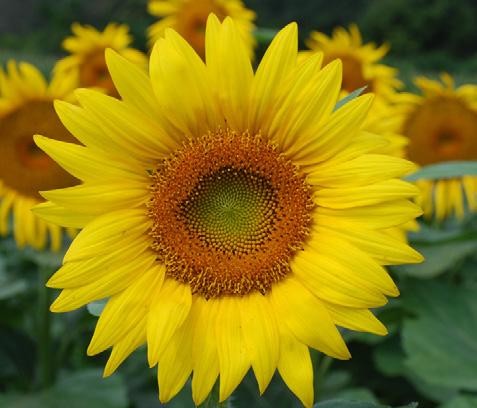

JERSEY GROWN Firewood
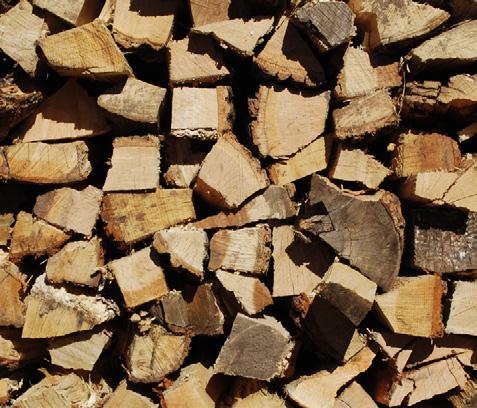

JERSEY GROWN
Annuals & Perennials
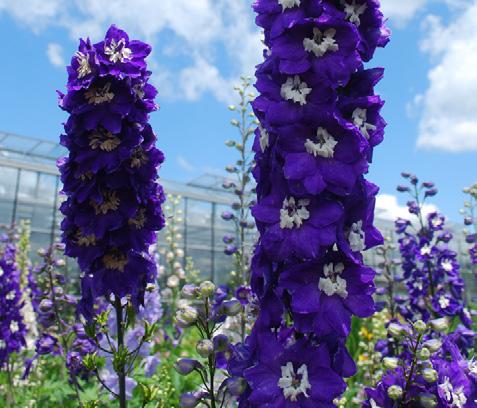
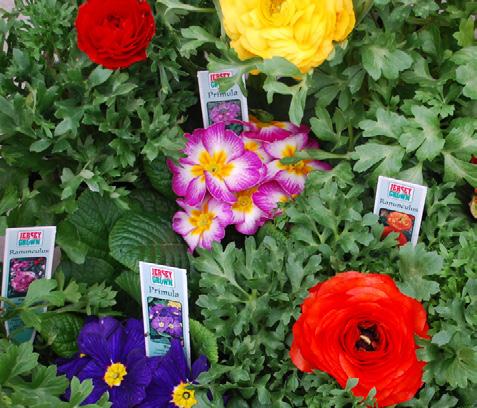


for trees, flowers quality, and Garden soil
shopping for GROWN know the trees, and flowers for quality, pest free, and the Garden climate and soil
When you’re shopping for JERSEY GROWN nursery stock, you know the trees, shrubs, plants and flowers checked for quality, disease, are pest free, and accustomed to the Garden State’s climate and soil conditions.




Made With JERSEY GROWN Wood Birdhouses & Bird Feeders


jerseygrown.nj.gov
jerseygrown.nj.gov
(Continued from page 1)
the early settlers who had the very tough task of surviving in the New World. Also, the juice from these apples, or cider, can be easily fermented. And after the juice goes through the fermentation process, if handled properly, it will become shelf stable. The alcohol will also keep many dangerous pathogens from growing. In effect, fermented juice, or hard cider, was safer to drink than a lot of the water that was available to our early settlers. Because of these reasons and a few others, just about every settler who had any designs on becoming self-sufficient planted a few apple trees. And more than likely, they would plant different types of apples. They might have a variety that ripened very early in the season in July and August, and then follow them with later and later varieties until they got to their latest ripening apples which they would invariably try to store so that they would have apples throughout the year. An example of a good keeping apple might be the “Tewksbury.”
According to The Apples of New York, which was
published in 1903, this variety was first noticed right here in Tewksbury, NJ back in 1817. At the time, it was found to be “a very handsome fair fruit, with more flavour and juiciness than is to be usually found in good keeping apples.”; and they were found to be “in good condition in August of the second year, preserved without particular care, perfectly plump and sound.” And don’t forget that this was way before any type of cold storage or refrigeration!

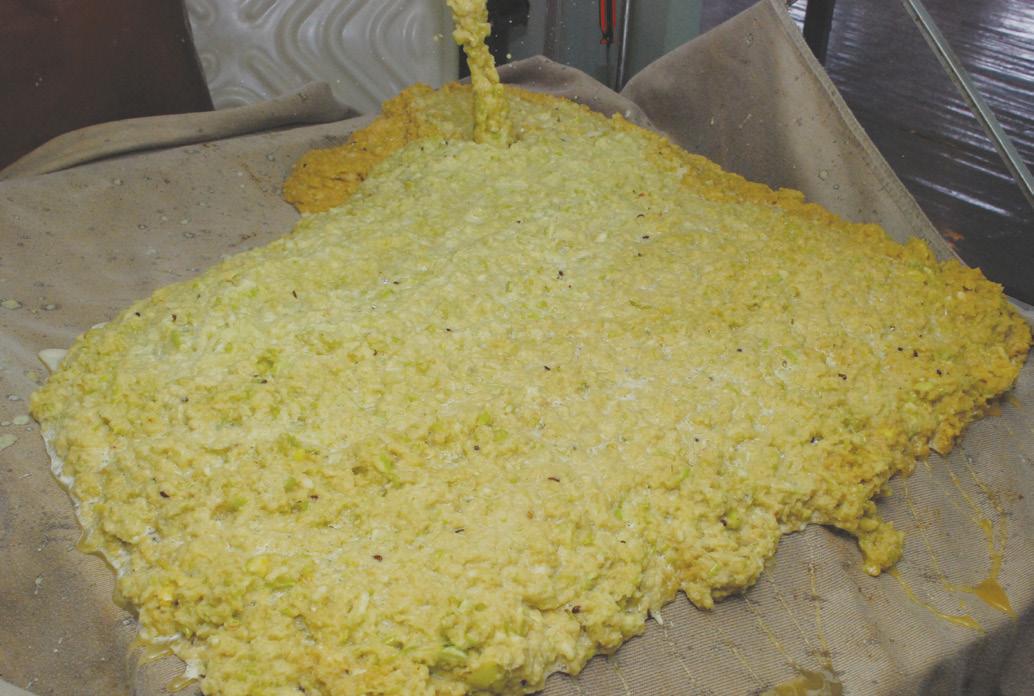
As the early farmers got established, they became better and better fruit growers. If a new apple was discovered that grew well in a certain area or had unique characteristics that made it desirable, growers would graft and propagate these new and improved varieties and share with (or sell them to) their neighbors. Gradually, as farms became more progressive and transportation improved, certain regions where apples grew well started to focus on a more commercialized type of apple growing instead of the subsistence farming
that had been taking place.
While varieties gradually improved, and farmers developed better strategies and practices for growing apples, they were still dealing with very large trees. These trees would be planted at a density of 20 trees per acre and would sometimes be more than twenty feet tall. Not only were these large trees very difficult to manage and very labor intensive, but they took an extremely long time to come into full production. An orchard might take fifteen to twenty years for it to reach its’ full yielding potential. These trees might have a productive life span of thirty years or so. While changes did occur, they did not happen too fast in the apple industry.
As our country’s transportation system improved, apples were able to be shipped further and further away. Many of the early apples were packed in barrels and shipped by boats or horsedrawn barges which were utilizing the newly constructed canals. And although
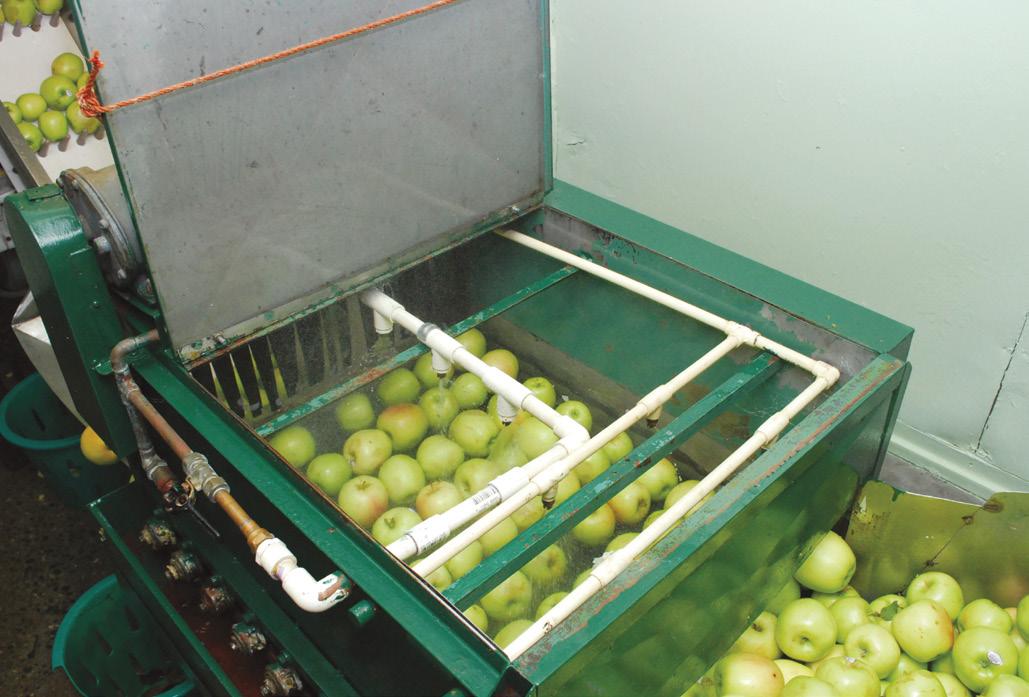

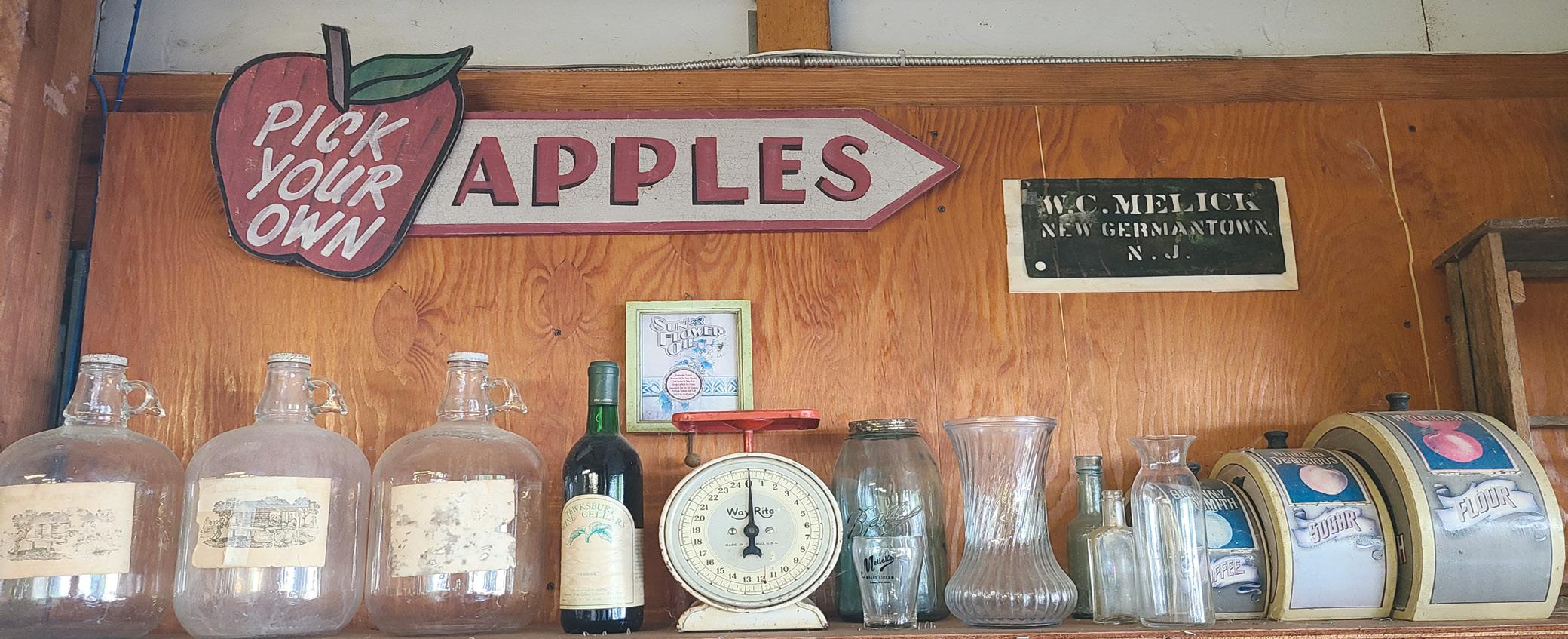


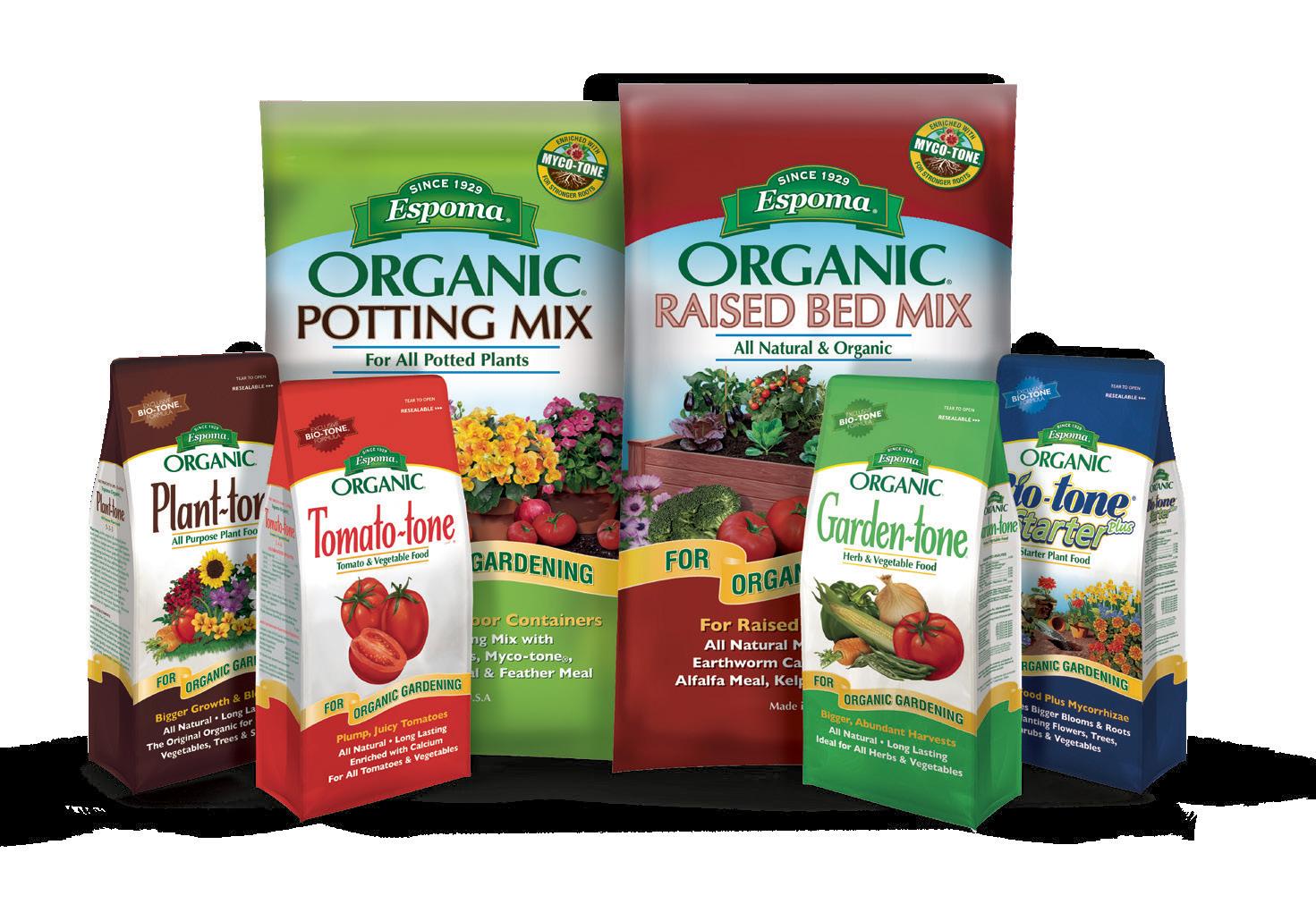





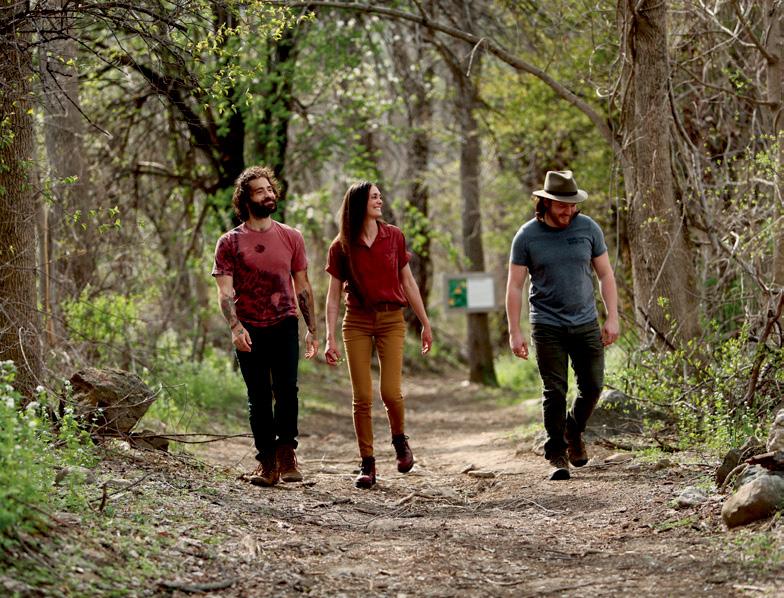




 By Andy Lagana Chef
By Andy Lagana Chef
Hello Gardener News readers. I hope that the summer was an enjoyable one for all of you. As we change seasons, I am pivoting from my beloved grill and sharing a perfect dish for an early fall evening – Seared Tuna with Noodle Salad.
This recipe calls for ahi tuna, which is a species of tuna found in tropical and subtropical waters. Also known as bigeye tuna due to its large eyes, these tuna grow up to a whopping 400 pounds and are found in the Atlantic, Indian and Pacific Oceans. In selecting your tuna, visit a local fish market or supermarket with a reputable fish department. Choose a tuna steak with a firm texture and a bright red color. Fish that is sushigrade or sashimi grade is the highest quality if you can find (and afford) it.
The dang myun noodle side dish is an ideal accompaniment and easy to prepare. These noodles are made from sweet potato starch and water. Since they do not contain wheat, they are a great option for those on a gluten-free diet. You can also substitute lo mein, rice or glass noodles in this recipe.
Let’s get started! For the main dish, pull together your ingredients that include 2 ahi tuna (Yellowfin or Bluefin tuna) steaks (about 4 oz. each and 1” thick), 2 tbsps. of soy sauce, 1 tbsp. toasted sesame oil, 1 tbsp. honey, ½ tsp. kosher salt, ¼ tsp. black pepper, ¼ tsp. cayenne
pepper (optional), 1 tbsp. canola oil or olive oil, green onions, toasted sesame seed and lime wedges for serving.
Pat the ahi tuna steaks dry with a paper towel. Place them on a plate or inside a plastic bag. Then, mix the soy sauce, toasted sesame oil, honey, kosher salt, pepper and cayenne pepper until the honey dissolves fully. Pour over the ahi tuna steaks and turn over to coat them completely.
As an option, you can allow them to marinate for at least 10 minutes or up to overnight in the refrigerator. You can also reserve a spoonful or two of the marinade before coating the fish for drizzling over the top after cooking it.
Heat a medium skillet (preferably non-stick or a well-seasoned cast iron skillet) on medium-high to high heat until very hot (or medium to medium-high for nonstick). I recommend that you give the cast iron 3 – 5 minutes to get hot and the nonstick about one minute, depending on how thick it is. Add the canola oil to the hot pan, then sear the tuna for 30 seconds on each side for very rare, one minute on each side for rare, 1 ½ minutes on each side for medium. Remove to a cutting board, and slice into ½-inch pieces. Serve garnished with green onions, toasted sesame seeds and a squeeze of lime juice.
For the noodle salad, you will need ½ pound Korean dang myun noodles, 2 ½ tsps. Sesame oil, 2 tbsps. Soy sauce, 2 tsps. white sugar, 1
tbsp. vegetable oil, 2 carrots cut into match-stick size pieces, ½ pound asparagus – thinly sliced, ¾ cup thinly sliced onions, 2 cloves minced garlic, 3 green onions cut into 1-inch pieces, ½ cup dried shiitake mushroomssoaked until soft and then sliced into strips, and 1tbsp sesame seeds.
Fill a large pot with lightly salted water and bring to a rolling boil. Cook noodles in the boiling water, stirring occasionally, until tender yet firm to the bite, 4 to 5 minutes. Drain, then rinse with cold water. Toss noodles with 1 tsp. sesame oil and set aside. Whisk together soy sauce and sugar in a small bowl, set this aside. Heat the vegetable oil in a skillet over medium-high heat. Cook and stir carrots, asparagus, onions, and garlic in hot oil until softened, about 5 minutes. Stir in green onions and mushrooms, and continue cooking and stirring for 30 seconds. Pour in the soy sauce mixture and add the noodles. Cook and stir until noodles are warmed through for 2 to 3 minutes. Remove from the heat and toss with sesame seeds and remaining 1 1/2 tsps. sesame oil.
From a drink pairing perspective, tuna is one of the rare fish options that goes well with red, white or rosé wines. Although it has this versatility, I have found that the white Albariño from Spain (or Alvarinho from Portugal) is the ideal match. Very affordable, too. Enjoy!
The U.S. Department of Agriculture’s Agricultural Research Service (ARS) San Joaquin Valley Agricultural Sciences Center (SJVASC) celebrated 100 years of cooperative research on September 12 with the grape industry that has positively impacted the way the world grows, cultivates and consumes grapes.
This historic grapevine breeding research program develops and introduces new, high-quality, diseaseresistant table grapes and raisins cultivars. The first table grape cultivar was developed in 1923 in Fresno, California, at the USDA Experiment Vineyard, part of the USDA Bureau of Plant Industry. In 1972, the program became part of ARS, the chief in-house research agency of the USDA.
Since then, ARS scientists have developed over half of the top 10-15 seedless grape varieties. The red seedless ‘Flame’ cultivar grape was grown by ARS scientists in 1973. The green seedless ‘Autum King’ grape was developed and released in 2006, and in 1983, ARS scientists invented seedless black grapes.
“The phenomenal research conducted by our scientists over the past 100 years created a billion-dollar industry and has defined how the world grows and consumes table grapes,” said ARS Administrator Dr. Simon Liu. “As we move into the next 100 years, our collaboration with the San Joaquin Valley Agricultural Sciences Center will continue to deliver innovative research that will produce high-quality, nutritious fruits for future generations.”
Red seedless grapes were unknown to U.S. consumers before ARS released the Flame variety. The release of another ARS variety, Crimson red seedless, in 1989 further increased this table grape’s popularity. Now grown extensively by domestic and foreign producers, these two varieties comprise a significant part of today’s consumer market for table grapes.
“The farming community in California produces 99 percent of the table grapes grown in the United States, and scientists working at SJVASC have led this effort,” said ARS Pacific West Area Director Dr. Tara McHugh. “This day recognizes a century of innovative research that has increased crop productivity and improved the quality and marketability of the table grapes we eat today.”
Find more information San Joaquin Valley Agricultural Sciences Center.
The Agricultural Research Service is the U.S. Department of Agriculture’s chief scientific in-house research agency. Daily, ARS focuses on solutions to agricultural problems affecting America. Each dollar invested in U.S. agricultural research results in $20 of economic impact.
Atlantic County
Phone: 609-625-0056
Bergen County
Phone: 201-336-6780

Burlington County
Phone: 609-265-5050
Camden County
Phone: 856 216 7130
Cape May County
Phone: 609-465-5115
Cumberland County
Phone: 856-451-2800
Essex County
Phone: 973-228-2210
Gloucester County
Phone: 856-224-8040
Hudson County
Phone: 201-915-1399

Hunterdon County
Phone: 908-788-1339
Mercer County
Phone: 609-989-6830
Memorial Day and Labor Day are the two holidays associated with the start and end of outdoors summer fun. After August, we shouldn’t count out outdoor activities at local farms. During the fall, New Jersey has some of the best weather to spend time taking in the sunshine or enjoying nature before the chill of winter arrives.
Among many outdoor recreational options in New Jersey, choosing to visit a farm that offers many local fresh products and agritourism activities is a great one. Whether its spending a day on the farm with the family or hitting the winery trail with friends, New Jersey farms can be a great way to spend an afternoon or an entire day.
Middlesex County
Phone: 732-398-5260
Monmouth County
Phone: 732-431-7260
Morris County
Phone: 973-285-8300
Ocean County Phone:732-349-1246
Passaic County Phone: 973-305-5740
Salem County
Phone: 856-769-0090
Somerset County Phone: 908-526-6293
Sussex County Phone: 973-948-3040
Union County Phone: 908-654-9854
Warren County Phone: 908-475-6505
Agritourism on farms can be categorized into Direct sales: consumers buy directly from farmers; Education: learning experiences, such as school tours; Hospitality: includes farm stays, on-farm dinners; Outdoor recreation: outdoor farm experiences; Entertainment: on-farm activities, such as festivals. According to the 2017 Census of Agriculture, there are 197 farms in New Jersey offering agritourism for the public to enjoy. Another 1,686 farms in the state offer direct sales of farm products. The number of women running agritourism and direct marketing operations on farms has increased, with approximately 43% of such operations in NJ owned and operated by women farmers.
Besides being time well spent with family and friends, supporting local farms is a great way to ensure community access to local foods and preserve views of open space. Keeping farmland local also offers additional benefits. Did you know
supporting farmers who manage farmland and keeping farmers in your community actually keeps property taxes from rising? By having farmers manage the land and open space, the cost of services in your municipality may remain more constant. Farmland that becomes developed creates a large services and school costs burden to municipalities. More houses mean more children in school. The portion of school taxes in your property can be the largest cost for some municipalities. Even 55 and older housing developments require more services like EMS, trash disposal, road maintenance, snow removal, and law enforcement needs when population numbers rise. Therefore, keeping land in farming and managed by farmers helps to keep your local taxes low.
So how does this relate to agritourism? More farmers are adopting new marketing strategies to remain viable in a highly urbanized state like New Jersey. Supporting their businesses by purchasing local farm products and being advocates for farmers are ways to ensure agricultural lands remain in our communities well into the future.

Visiting a farm can create many memorable experiences and can be an educational opportunity to learn how food is grown and seeing nature in action. A day on the farm can be especially educational for youth and those who have no experience of how crops are grown. Regular visits to the same farm can help returning visitors see the transformation of plants emerging as seedlings all the way to a mature plant ready to be harvested and consumed. There is no better taste than a fresh picked fruit or vegetable that is at its peak of ripeness.
Besides seeing fields full of crops, many agritourism operations offer a variety of options like winery tours that showcase how wine is made, crafting classes, exercise classes like yoga, cooking classes, farm dinners, nature tours, field mazes, entertainment events, and many other activities. Events are often found on an individual farm’s social media page or website.
Another way to connect and identify local farms with agritourism and direct marketing opportunities is to check out your county’s economic development webpage under its tourism tab. Additionally, to locate farms near you, visit the following sites: New Jersey Department of Agriculture at findjerseyfresh. com/JerseyFresh, New Jersey Farm Bureau at njfb.org/produce/, and Local Harvest at www. localharvest.org/. Remember, farmers also bring their produce to towns via local community farmers’ markets. Many of these are listed on the Local Harvest webpage.
In fall, many of our local farms begin harvesting some of our favorite fruits and vegetables. With summer coming to an end, farmers are still working hard to bring the fresh and nutritious foods we all enjoy. Plan an afternoon of apple picking or finding that perfect pumpkin. See when farm festivals are being held and buy tickets online to be sure to secure a spot. Organize a group to enjoy the fresh fall air around a firepit, while listening to a live band and sipping New Jersey wines. Plan a friend’s night out by signing up for a fall or holiday wreath-making class at a farm. Agritourism offers multiple benefits and opportunities for fun at local farms for the whole family or a group of friends to enjoy.
By
NicholasBello, chair of the Department of Animal Sciences, School of Environmental and Biological Sciences.
I’m pleased to introduce Dr. Tess Stahl to the SEBS/NJAES community.
Tess started on September 1, 2023 as an Assistant Extension Specialist in the Department of Animal Sciences. She is New Jersey native from Hackettstown, NJ.
Tess has an associate degree in business management from Warren County Community College, and a B.S. degree from Delaware Valley University in Doylestown, PA ,where she majored in Livestock Science and Management
with a minor in Dairy Science.
Tess went to graduate school at the University of New Hampshire and studied growth promoters in post-weaned heifers under advisor Dr. Peter Erickson. She finished her M.S. degree in December 2019, and completed her Ph.D. in July 2023. Her research was focused investigating colostrum production and bioactive compounds in Jersey cows.
Tess will be leading research and outreach programs to New Jersey livestock farms, with a particular focus on ruminant animals (including llamas and alpacas) for the production of meat, milk, wool, and fiber.
The North American Strawberry Growers Association visited New Jersey on August 15 and 16 for its annual tour. Executive Director of the North American Strawberry Growers Association Kevin Schooley, based in Ontario, Canada, organized the tour with suggested stops from Rutgers Cooperative Extension Agricultural Agents, Bill Hlubik, Peter Nitzsche and Gary Pavlis. Tour stops included farms in Gloucester, Atlantic, Burlington and Monmouth Counties. Accompanying the group for the tours were Agricultural Agents Michelle Infante-Casella, Bill Bamka, Rick VanVranken and Gary Pavlis. Rutgers Agricultural Program Associate, Kate Brown also assisted with discussions on the tour.
Rutgers Cooperative Extension hosts provided information about each farm and highlighted topics about NJ Agriculture to participants. Agent Infante-Casella provided an overview of Rutgers strawberry research and outreach at Duffield’s Farm in Washington, Township, Gloucester County where the farm is participating in growing the new Rutgers strawberry variety ‘D’Light’. Matt and Dave Duffield explained their operation and hosted a wagon tour of the fields. The second stop on day 1 of the tour included a tour of Stoney Creek Blueberry Farm in Hammonton, New Jersey. Tour hosts Joe Berenato and Jerry DeFicco explained their blueberry operation. Gary Pavlis spoke about blueberry production in New Jersey and work being conducted at Rutgers for this crop. Rick VanVranken spoke to the group on tour bus while traveling to Walking Bird Farm where Jen Lamonica
and her husband Ryan discussed pick-yourown strawberry production and marketing. The tour next went to the Rutgers Cranberry and Blueberry Marucci Research Center in Chatsworth, NJ where researchers explained work being conducted on these two fruit crops. The last stop on day 1 was to Sharrott Winery in Hammonton.
Day 2 started off at Specca’s Pick-Your-Own Farm in Burlington County, NJ. Here Dave Specca showed the group the farm’s production system for strawberries and the various crops grown. The second stop was to Johnson’s Locust Hall Farm where Pete Johnson spoke to the group about the importance of strawberries in agritourism and direct marketing in New Jersey. Stop 3 was to Fernbrook Farms where Larry Kuser greeted the group and explained their CSA operation. Stop 4 on day 2 was to Kube Pak Greenhouses in Allentown, NJ to see strawberry plug production. Last but not least, was a stop to Screamin Hill Brewery in Cream Ridge, NJ, to see on-farm craft beer production.
The tour participants included over 30 farmers, researchers and industry personnel from all over North America. Strawberries can be an extremely profitable crop for NJ farmers and farmers throughout North America, if weather conditions cooperate. New Jersey strawberry farmers who hosted the tour stops agreed that the 2023 strawberry season was one of the best quality and highest yielding crops in recent years. Most NJ producers sell either pick-your-own or retail sales of their strawberry crop. It was discussed that very few wholesale strawberry producers are left in the Garden State and capturing the retail dollar from consumers is very important in overall farm profitability.
Rutgers entomologists explain what may have happened to the invasive species in New Jersey Students strolling through Busch campus at Rutgers University–New Brunswick last fall were greeted by a slew of spotted lanternflies – invasive insects who huddled outside of the Richard Weeks Hall of Engineering and other buildings like anxious, early morning shoppers on Black Friday.
So far this season, the bugs – who in past years made local headlines and were the subject of a pub crawl in Bordentown – don’t seem to be around as much in some parts of New Jersey.
What happened to the spotted lanternflies, whose destructive-toplants tendencies have drawn concern from state officials and the agricultural industry?
Two Rutgers entomologists – George Hamilton, an Extension Specialist in Pest Management with the Department of Entomology at the School of Environmental and Biological Sciences, and Anne Nielsen, an Associate Extension Specialist in Entomology – provided some insights on why these winged invaders seem to be in far fewer numbers around these parts this season.
Where are the spotted lanternflies in New Jersey this season? What’s happened to them?
Hamilton: They are pretty much distributed throughout the state and the whole state is now under quarantine. Having said that, in many areas the numbers are lower than they have been the last two years. The reasons are unclear.
Possible reasons could be the hot dry weather we had last summer, the severe cold we had in January or the relatively warm weather we had during most of the winter. It could also be that the high populations have severely damaged or killed their host plants causing them to move on.
What factors might be affecting spotted lanternfly populations in the state? Has nature evolved to combat these invasive insects?
Hamilton: Possibilities include climatic factors, natural predation and parasitism (although at low levels), disease and human actions.
Have we learned anything new about spotted lanternflies since their arrival to the state? Anything surprising?
Nielsen: The spotted lanternfly has a wider host range than we initially expected, but it includes mostly hardwood trees. Most significantly, the spotted lanternfly’s impact to agriculture has not been as widespread as initially predicted. We are seeing impacts to grape production and some nursery crops, but agricultural impacts are mostly limited to these commodities.
Where are spotted lanternflies now in their growth-cycle stage?
Hamilton: Populations for the most part are now adults, however fourth instars (red, black and white individuals) can still be found.
How are we dealing with spotted lanternflies? How do we counteract their presence?
Nielsen: There are multiple approaches to combating the spotted lanternfly. The New Jersey Department of Agriculture established a quarantine early in its detection in the state. This allowed them to selectively treat tree of heaven, a preferred host plant, and distribute information to the general public to reduce human-aided movement.
To manage the pest long-term, we will need a multi-life stage approach that likely includes trapping for the nymphal stages on preferred host trees like the red maple, black walnut and tree of heaven. The United States Department of Agriculture-developed circle trap is easy to make and can remove thousands of young nymphs. Adult management likely requires insecticide treatment by trained professionals on hardwood trees and by commercial grape growers. Scraping of egg masses may help but will only remove about 10 percent to 20 percent of eggs on a tree.
Long-term solutions will include biological control with species that target lanternflies after more research and screening is conducted.
This article originally appeared in Rutgers Today.
Last month I strongly urged you to start your fall seeding. Did you remember to apply some new seeding-type lawn fertilizer too? Now is a great time to feed your lawn to thicken and green-up the grass plants.
Lawn grasses need to be fed regularly to look their best. It is important during the growing season from March to November to feed your lawn. How would you feel if you only had one meal a day? You would be struggling too. Why is fall feeding so important? In the 1980s, universities realized that too many folks were ignoring fall lawn feeding. Remember the slogan, “Fall is for planting”? This is true for both plants and lawns.
The ground in the fall is still very warm from the summer heat, so grass seed and your existing lawn will grow and thrive. I’m sure some of you have had trouble establishing seedlings in the spring. Spring weather tends to be a wildcard and many months are too cold and wet. Newly planted grass seed can take a lot longer to germinate with these spring conditions. We hear about it
every year. “What’s wrong with the grass seed? It has been down for three weeks and little germination.” People need to be more patient. The cold, wet weather delays germination. Would you rather swim in the ocean in March or early fall? I’d rather swim in early fall since the water is warmer. Fall plantings of grass seed tend to germinate very quickly because the seed likes warm soil!
Back to fertilizer. How many times have you fed your lawn this year? I hope by now you have at least made two applications. Early fall is a great time to fertilize to help your grass thicken and grow. This new growth, along with consistent mowing, creates
a beautiful lawn. Summer damage is behind us and Mother Nature takes care of the rest. What type of lawn fertilizer should I use? Well, there are a number of “FallWinter” formulations available to choose from. Some feel that Nitrogen, the first number on the bag, is most important in the fall. Others feel that Potash, the last number, is more important for fall feedings. Nitrogen promotes healthy top growth and greening to your lawn. Potash helps to develop a strong healthy plant and survive the cold winter ahead. Fall feedings help your lawn stay greener through the year’s end and also can help it “greenup” earlier in the spring. What about the middle
number, phosphorous? Phosphorous helps to grow strong roots. However, unless you are applying grass seed, in most states Phosphorous is not allowed to be applied. This law is in place to help reduce water quality issues. If you have a soil test reflecting your soil is low in Phosphorous, you can apply a lawn fertilizer formula containing Phosphorous. This is why so many lawn fertilizers do not list any Phosphorous unless you are using a new seeding-type fertilizer. Fall is also a good time to clean up lawn weeds. Even though the bright yellow dandelion flowers are not as visible as in spring, the plants can still be growing during fall months. It’s best
to get rid of them now instead of waiting until spring. Dandelions, clovers, plantain and chickweed are all in the broadleaf weed category. If you apply a broadleaf weed control, be sure it is labeled for the weeds you are trying to kill. Remember, do not apply grass seed if you are controlling weeds. Either control weeds now and delay seeding for three to four weeks or apply grass seed now and worry about the weeds next spring.
Have you been satisfied with your lawn this year? I hope you followed a sound lawn care program and can give yourself at last a B+ score for your efforts. Congratulations to those who award themselves an “A”. There is still time to make adjustments to get your lawn in great shape.
Editor’s Note: Todd Pretz is Vice President of Jonathan Green, a leading supplier of lawn and garden products in the northeast. For more information, please visit: www.jonathangreen.com

What medium sized tree has four types of leaves which can turn lovely pastel shades of pink, orange, purple, yellow, and red in the fall?
If you haven’t yet guessed, it is sassafras (Sassafras albidum). Sassafras leaves come in as a right-handed mitten, left-handed mitten, three lobed, and a simple oval shaped leaf. Despite numerous attempts, no one has any research backed theory of what conditions determine leaf shape. Besides unique leaves, the tree also has a pleasant fragrance and cheerful yellow early spring flowers followed by colorful blue-black berries (drupes) in the fall. The individual flowers are about 1/3 inch in diameter, but they are borne in numerous conspicuous yellow clusters which are 2-3 inches across. Male and female flowers are borne on
separate trees.
The generic name Sassafras is apparently adopted from the Native Americans, the species epithet albidum means white and refers to the whitish undersides of the leaves. Sassafras reaches a maximum of about 60 feet tall and about 30 feet wide. The maximum trunk diameter is about 24 inches. The entire plant has an aromatic, spicy smell primarily due to the oil safrole. Sassafras roots, stem and leaves have a long history of use by Native Americans, Spanish explorers, and later arriving colonists.
The Native Americans used it as a general cure-all and more specifically as an eye wash, for G.I. problems, sores, colds, bruises, wounds, fevers, and headaches. The Spanish waxed eloquent on the virtues of sassafras as a cure-all to prevent sickness and sent much prized seeds back to Europe by 1574.
The American colonists and Europeans became so
enamored with this prized medicinal plant, which was also used to treat syphilis, that for a short time in the 1700’s, sassafras became the number two colonial export, right behind tobacco. However, total exports of sassafras soon dropped rapidly because harvesting sassafras bark or roots kills the trees.
The sassafras tree was also used by the native population for food. The roots and bark were used for tea and the leaves were used to thicken soup and also add an aromatic flavor. This native traditional use of dried sassafras was adopted by the Louisiana Creole population and called gumbo filé, which is produced from dried sassafras leaves and bark. Filé is used in soups, stews, and gravies. Along with sarsaparilla and black birch, sassafras was a traditional component of brewed root beer.
I always loved home brewed root beer as a young child and couldn’t understand
why my father would always limit my intake to just one a day and only a few per week. A note of warning must be given here that sassafras is considered a mild carcinogen and toxin. However, Peterson’s Field Guide to Medicinal Plants states that the amount of carcinogenic activity in a traditional root beer is below the level of that in a commercially brewed beer.
Animals also widely utilize sassafras. Sassafras is host to the promethea silk moth, imperial moth, and several species of swallowtails. The twigs and foliage are also utilized by beavers and deer. The fruit is consumed by bears, beavers, a host of birds, deer, rabbits, and squirrels.
Sassafras wood is lightweight and tan in color. It is rot resistant and has been used for furniture, ox-yokes, posts and rails, and small boats, although commercial grade lumber trees are rare. Woodworkers like the sassafras for projects since it
is easily worked and pleasant smelling. Native Americans used sassafras for fire starting since the safrole oil is easily ignited.
Reproduction of sassafras is by root or stem cuttings. Seeds should be stratified for 2 months prior to sowing. The plants grow best in neutral, rich, well-drained soil in full sun or partial shade. The trees have a tendency to sucker and inhibit plant growth in their root zone. The plant is basically pest free except in the Southern US where laurel wilt is a serious problem.
Sassafras is a decorative small tree both in the spring and fall. If you have room, it will make an historically interesting addition to your yard.
Editor’s Note: Hubert Ling is Horticultural Co-Chair of the Native Plant Society of New Jersey. He can be reached at milhubling@ verizon.net.



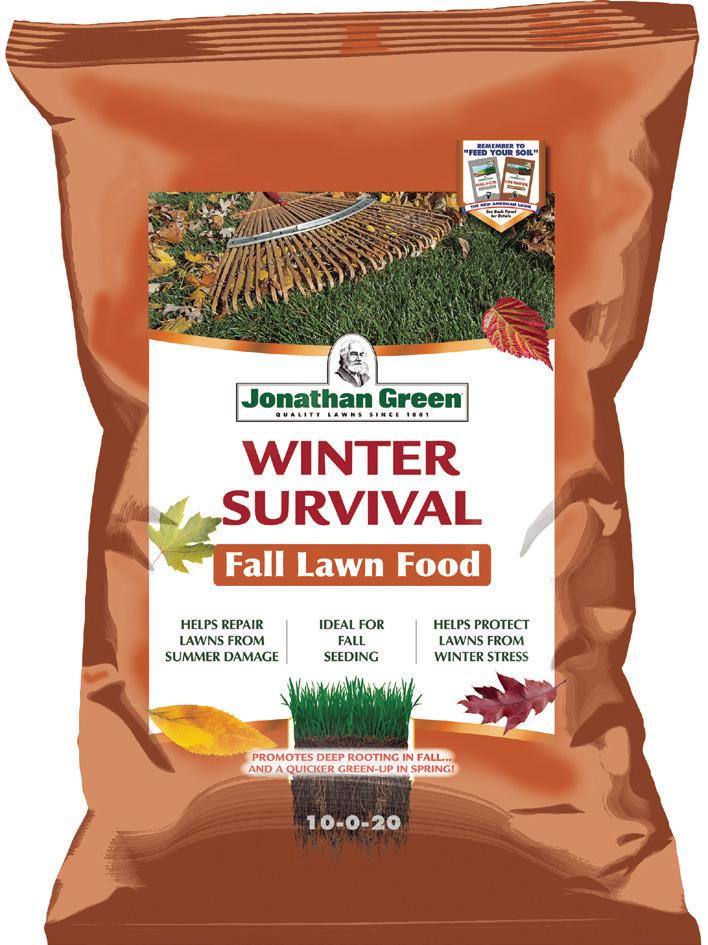


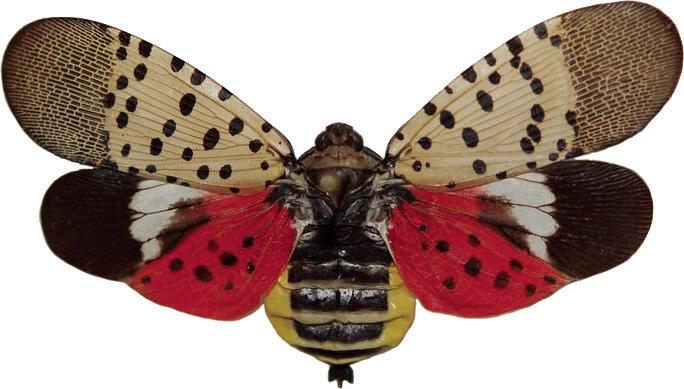
our Sales Specialists
Barckett 201-446-0127
Patrick.Barckett@NJBobcat.com
201-788-4838
CraigD@NJBobcat.com
973-800-5097
Steve.Caputo@NJBobcat.com
973-800-7109
Sean.Kunkel@NJBobcat.com
Thursday, October 19th at 6:00 pm

When your work calls for big performance and productivity for difficult jobs, step into new large excavators from Bobcat. Sometimes, bigger challenges demand a bigger excavator. New Bobcat ® large excavators will measure up and then some.


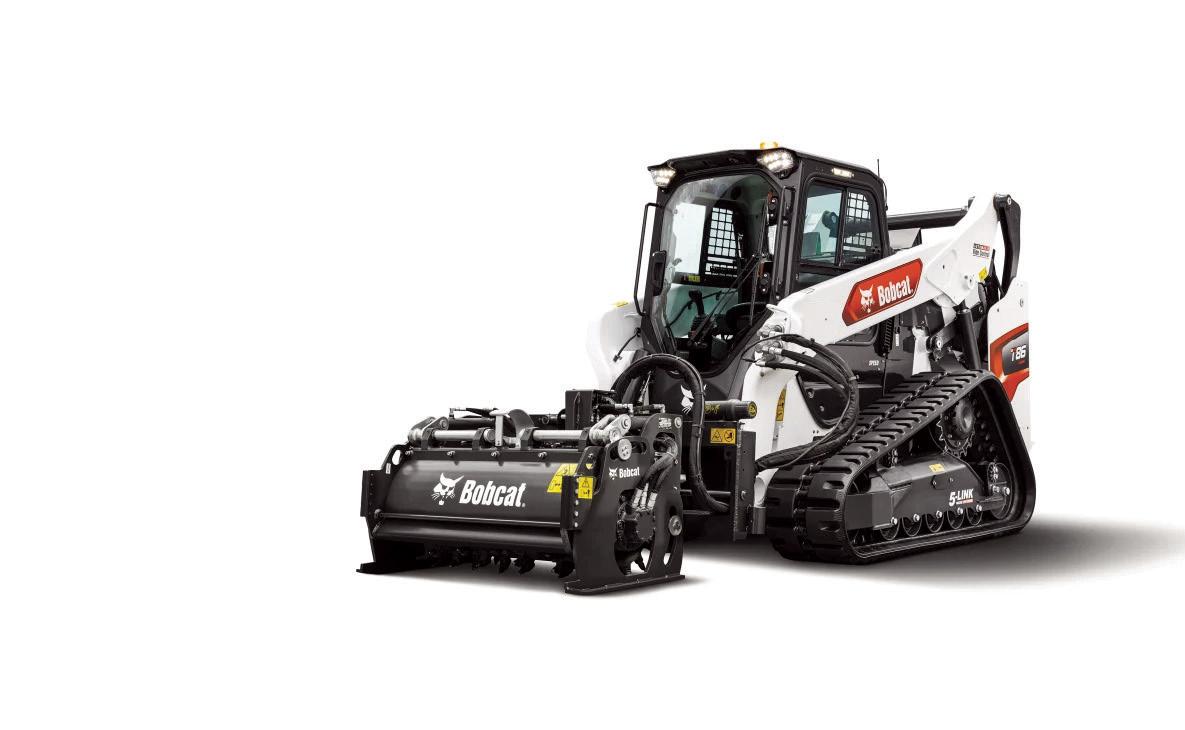
From live site monitoring systems to salt tracking systems and more, learn from owner David Ross of SnowScapes how he is combining the most advanced equipment, methods, infrastructure and technology along with industry certified managers, to perform the largest of tasks with ease and safety.
Plus, Chelsea Ingram, Senior Meteorologist at WeatherWorks will drop in for a quick Winter Weather Outlook and help you learn how to read the radar on your own!
Kindly Register by Calling the NJLCA at 201-703-3600
(Continued from page 7)
progress might have seemed slow, there was a constant advancement in growing practices, varieties, packaging, and transportation.
As for the “Tewksbury” apple, it did not fare too well. After it was first noticed in 1817, it “was given a place in the catalogue of the American Pomological Society in 1871, but was dropped from that list in 1890.” This was due to “pretty good evidence that it does not possess superior value.” Oh well, you can’t win them all!

Quite a lot has changed in the business of growing apples over the last two hundred years here in the Garden State. Gone are the days of everyone having a small orchard and filling up their cellar with apples for the winter. Also gone are the mammoth trees that took twenty years to mature and the shipping of apples in barrels. And while we have made tremendous advances as an industry, many of the old challenges of growing apples remain, to go along with some new ones that my ancestors would never have even imagined.
One of the biggest differences with modern orchards is the size of the trees. While apple trees used to be massive in size, most orchards today are planted at a much higher density. The implementation of dwarfing rootstocks has allowed growers to shrink the size of their trees and utilize spacings of two to three feet apart in the row with only the bare minimum of space left between the rows. One advantage of this is that an orchard can reach full production in only a few years. Another advantage is that it greatly increases labor efficiency while working in the orchard (as well as making the trees more accessible to “pick your own” customers). Because these trees are so small, and it’s not taking years to grow a large framework and support system, they need to be supported by some type of trellis system. This is constructed in the year of planting, and after a couple of years of training and pruning, hopefully the trees have filled their space nicely. Of course, the obvious downside to all of this is the tremendous cost per acre to plant an apple orchard. But if the right varieties are selected, and mother nature cooperates, the intensive system is absolutely the way to go.
(Cont. on Page 18)
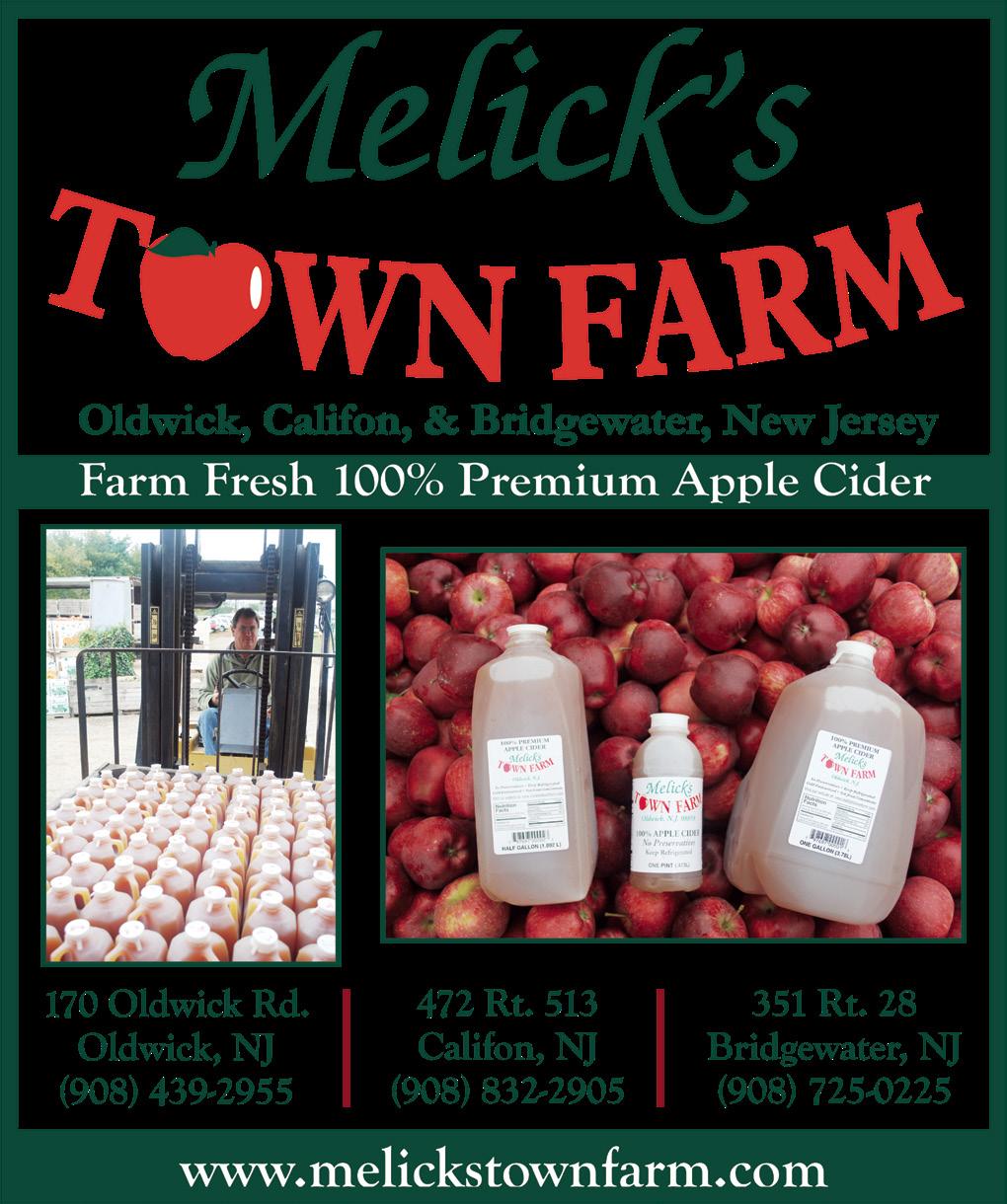
Regardless of whether I am talking to a gardener or nongardener alike, some plants are simply recognized by all. For example, Pansies are wellknown for colorful spring displays, petunias for summer color and Chrysanthemums for autumn displays.
Begonias are another well recognized plant, typically known as houseplants or summer annuals. However, Begonias are not recognized as a winter hardy perennial, especially in New Jersey! Yet, for a shady woodland garden, it is hard to beat the long and rich floral display of Hardy Begonia, botanically known as Begonia grandis.
Begonias are a member of the Begoniaceae or Begonia Family and are native to Central and South America, the Caribbean, Central and Southern Africa and Southeastern Asia. The Begonia Family is also one of the largest families with over 2,000 species, possibly explaining why they are among the more readily recognized plants. The genus was initially named by the French Franciscan monk and botanist Charles Plumier (1646-1704) in honor of the French colonial official and naturalist Michel Bégon (1638-1710). The name
was subsequently adopted by the Swedish botanist Carl Linnaeus (1707-1778) in 1753.
Begonia grandis is native to a vast area of China, stretching from North and South-Central regions East to the Pacific. It was originally described in 1791 by the Swedish botanist Jonas Carlson Dryander (1748-1810). The species epithet means large, describing the plant’s ability to reach 2+ feet in height and width. It is unclear where Dryander received his specimen to study, although there were numerous individuals collecting and distributing plants from China. One such individual was Thomas Evans (1751-1814), a clerk for the East India Company who is credited with being among the first to introduce this Begonia to England. He introduced the English botanist Henry Charles Andrews (1794-1830)
to this plant and unknowing of Dryander’s work, Andrews proceeded to describe and name the plant Begonia evansiana in 1810.
Although Andrews’ ode to Evans was ultimately discredited since Dryander properly described it first, the name still remains in use by many retailers today. Fortunately, Evans did introduce a beautiful plant to horticulture, notable for both its foliage and large pink flowers. The ovately shaped leaves are 4-8” long and wide with an olive-green upper surface. The veins are light red on top, but when seen from beneath, the lacework of deep red interconnecting veins is far more prominent and ornamental.
Typical to the genus Begonia, the plants are monoecious, whereby the male and female flowers appear separately on
the same plant. The flowers appear on branching structures called cymes. The stems of the cyme are also an attractive red and gently arch downward. There is no distinction between the petals and the outer protective calyx of the bud and as a result, the showy part of the flower is called a tepal! On the male flowers, there are two large vertical tepals combined with two smaller horizontal tepals and a conspicuous ball of yellow stamens in the center. By contrast, the female flowers lack the horizontal tepals and have a large, three-winged pink ovary at the flower’s base. The ovary remains attractive long after the tepals have fallen. The cultivar ‘Alba’ sports equally attractive white flowers with light pink ovaries.
With the advent of October another fascinating aspect of the plant is revealed – bulbils!
These pea-sized structures are actually small tubers that develop in the leaf axils of the upper leaves! The bulbils are genetically identical to the parent plant and lead to masses of new plants come spring.
Begonia grandis is very easily grown in dappled shade and moisture retentive soils amended with compost. Hardy to zone 6, in more northerly regions it is beneficial to add 1-3” of protective mulch come fall to aid in overwintering.
Whether a houseplant or an outdoor annual, Begonias are certainly well-recognized. Having struggled with Begonias as houseplants, I can say with conviction that Begonia grandis is a far more gracious and forgiving of a plant to grow and enjoy in the garden. Perhaps it’s time for Begonia to become better recognized as a hardy perennial!
Editor’s Note: Bruce Crawford is a lover of plants since birth, is the Manager of Horticulture for the Morris County Parks Commission, and a Past President of the Garden State Gardens Consortium. He can be reached at BCrawford@ morrisparks.net

Do you know someone in the “Outdoor Living Industry” whose contributions deserve recognition? Gardener News is accepting nominations for its 2023 Person of the Year Award.
Nominee must be from the agricultural, gardening, garden center, landscape, outdoor living or nursery industries who best epitomizes concern for, involvement in, and dedication to those pursuits. Or a person who performs exemplary outstanding service to the environment and/or outdoor living industry.
The deadline for receiving nominations for 2023 is November 1, 2023. Gardener News annually bestows our “Person of the Year” Award in our January edition.
Nominations can be submitted at GardenerNews.com under the “Awards” link on the navigation bar.
This past weekend I was in Chicago for a family reunion. Whenever I am in Chicago, I always try to make it to Millennium Park and more specifically the Lurie Garden. I lived in Chicago from 2015-2019 and literally had a bird’s eye view of Millennium Park and the Lurie Garden from my apartment. When Millennium Park was designed, the intent was to bring together the greatest designers from across the globe, which included Frank Gehry for the design of the bandshell; Anish Kapoor for the iconic Moon Gate (aka “the bean”); and the renowned Dutch garden designer, Piet Oudolf, to design the Lurie Garden.
Oudolf has become world-renowned for “New Perennial” movement which features designing boldly and provocatively with drifts, blocks and matrices of perennials, grasses and bulbs. He often works closely with fellow Dutch designer, Jacqueline van der Kloet, who designs the bulb layer. Piet’s naturalistic design strives to have beauty throughout the year, therefore the architecture of the plant, especially in winter, as well as winter interest from seeds, berries and foliage, is a strong component of his designs.
Oudolf has designed many of the great public spaces around the planet including the gardens at the Royal

Horticultural Society, Wisley; the galleries at Hauser and Wirth in Somerset, England; the Delaware Botanic Garden, and his most well-known masterpiece, The High Line in New York City.
This past weekend many of Piet’s most iconic perennials were in full bloom at the Lurie Garden. He uses many of the silphiums which are native to the Midwestern prairies, including the compass plant, Silphium laciniatum, which has large dissected basal leaves and stems that tower to ten feet tall with yellow daisy-like flowers that sit atop these wiry stems, as well as a close relative Silphium terebinthanaceum, prairie dock. As they mature, they are one of the best food sources for the American Goldfinch. One of my favorite perennials, mountainmint, Pycnanthemum muticum, was a buzz with pollinators. While the flowers themselves are somewhat inconspicuous, it boasts attractive white bracts, and because of its
stoloniferous nature it is a great ground covering perennial. All of the mountain mints are extremely resistant to deer. There are many coneflowers in the Lurie Garden. The pale coneflower, Echinacea pallida, has reflexed soft pink petals and a center “cone” of black seeds that are a source of food for all of our native seed eating birds. Throughout the garden is another prairie native, rattlesnake master, Eryngium yuccifolium. This very architectural white flowering perennial has flower and seed heads that resemble thistles. They set copious amounts of seed and seedlings that serendipitously emerge in the garden. The native grasses, such as, little bluestem, Schizachyrium scoparium, are an important element in these naturalstyle gardens. Little bluestem is characterized by narrow leaves that have a “blue” or silvery tint. The prairie dropseed, Sporobolus heterolepis, is an iconic grass in his designs. This
clump forming grass has narrow leaves. In mid- to late-summer, wiry stems with delicate sprays of flowers arise from the clump of foliage. While the flowers themselves are not particularly attractive they do create a fine texture in the landscapes. Additionally, the fragrance of the flowers has been described as “fresh,” “cilantro” or like “buttered popcorn.” All the grasses are great plants that provide a backdrop or foil to the more colorful or architectural flowering perennials.
While these gardens have their greatest beauty in the summer, they have an amazing architectural quality as they take on a myriad of autumnal colors and then retain their form during the winter. The native grasses, especially, have great structure that greatly add to the winter interest.
For more information on the design approaches of Piet Oudolf there is the documentary film, Five
Seasons: The Gardens of Piet Oudolf. Many books have been written as well including, Planting the Natural Garden; Landscape in Landscapes and Hummelo: A Journey Through a Plantsman’s Life And, of course, the best way to learn about his work is to visit and study firsthand in the great public gardens that represent his work.
Editor’s Note: Andrew Bunting is Vice President of Horticulture for the Pennsylvania Horticultural Society. He is one of the most recognized horticulturists in the Philadelphia, Pa., region and a highly regarded colleague in the world of professional horticulture. Bunting has amassed a plethora of awards, including the American Public Gardens Association Professional Citation, Chanticleer Scholarship in Professional Development, Delaware Center for Horticulture’s Marion Marsh Award, and the Certificate of Merit from the Pennsylvania Horticultural Society. In addition, Bunting has lectured extensively throughout North America and Europe, and participated in plant expeditions throughout Asia and Africa. Learn more at https://phsonline.org/team/ andrew-bunting
(Continued from page 16)
The types of apples being grown have also changed dramatically. Long gone are the days when apple varieties were judged on their ability to hold up for a year in non-refrigerated storage. Today, we have not only refrigerated storage, but “controlled atmosphere storage” as well. This allows for an uninterrupted supply of high-quality fruit throughout the entire year. And with our modern transportation network, these apples can
be anywhere in the country in a matter of days. Varieties are now selected based on flavor, yield, and appearance, and not necessarily in that order. Basically speaking, a grower wants an apple that grows and yields well, without too much extra work or expense. Then, the apple must look good and have a nice appearance so that the consumer will purchase them. And finally, the apples should taste good. This will keep the customer coming
back for more.
One other area of importance that I should mention is the name of the variety. Consumers do not just purchase on appearance alone. For the most part, they know that a Gala will be sweet, and that a Granny Smith will be tart etc... This means that they have preconceived notions of what an apple is supposed to taste like. But give them a bad experience once or twice, (think
(Cont. on Page 24)

Adopted in April of 2017, the New Jersey Tree Experts and Tree Care Operators Licensing Act requires licensing and registration of all tree care businesses operating in New Jersey. The legislation is effectuated by the New Jersey Board of Tree Experts.
This legislation took decades to become law and was motivated to ensure enhanced safety of tree workers and the public. Legitimate tree care companies were frustrated by being pitted against those flying under the radar with insufficient insurance and training. This act established industry standards as law, leveling the playing field for competitors and raising the level of tree care in the state. The law protects tree owners by setting minimum insurance levels, cannons of professional ethics, and continuing education requirements.
Many tree care companies were started from the back of pickup trucks, mine included. I remember having this conversation with a fellow arborist who stated, “I dislike how they label those working out of the back of a pickup truck as fly-bynights. It’s how most of us got started!” The law was never intended to put anyone out of business, but rather to protect the public, their trees, and the honorable workers in this potentially dangerous industry who do meaningful work and provide for their families.
People are drawn to our industry by its ever-changing and challenging scenarios
and its freeing attributes. They are active people in a potentially dangerous industry which holds a high level of accountability, often with dire consequences. Some are resistant to perceived infringements on their freedoms through what may be thought of as government over-reach, but most have been proud that New Jersey leads the way nationally with this legislation. Most other states, and some other countries, are interested in adopting our model.
Since the law’s inception, we’ve seen safety and professionalism increase in our industry. More arborists are obtaining the appropriate insurance types and minimum coverage amounts, and we’re seeing more licensed arborists participating in training and education than ever before. Choosing to ignore the law will result in costly fines and possibly being put out of business. Currently there are seven inspectors patrolling our state and following tips to ensure compliance. If you’re a non-compliant arborist reading this, I recommend contacting the NJ Board of Tree Experts for information on how to comply with the law (NJBTE.org or 732-5340982) or njtreeexperts@ gmail.com).
Coincidently, a surprising number of homeowners have no idea how much liability exposure they take on by hiring an unlicensed, unregistered, or under-insured tree care company. This law, initiated in NJ by a handful of visionary arborists, is the high-water
mark for the nation and NJ arborists should be very proud of their great Garden State for it!
Lastly, I’d like to report on the strong contingent our state chapter sent to the International Society of Arboriculture (ISA) Conference in Albuquerque, New Mexico. Joe Greipp, our executive director, Scott Tapp, our past-president and chapter representative, Christina Best, our executive assistant, Joshua Best, a trustee of the board, and our current tree climbing champion, Brick Reilly, all represented us to our international community. This annual conference brings chapters from around the world to share new research, organizational strategies, innovations, and is host to the International Tree Climbing Championship. I am so proud to report that Brick Reilly, an arborist from Springfield, NJ, won the coveted “Spirit of the Competition Award.” He was chosen for this award by his peers. Knowing how incredibly positive, motivated, and supportive Brick is, I am not surprised by this great honor. We are grateful to Brick for all his efforts in training for this event, and inspiring so many in the process.
Our New Jersey Chapter is a very active and dynamic component of the ISA. It is highly respected and continues to emerge as a leader in this international organization. We continue to build momentum and hope you’ll consider joining us in the future as we lead the way in our country, and the world!
As the incidence of non-native pests and pathogens continue to rise and cause wide-spread tree mortality, crop fields and livestock operations are experiencing increased farm damage that can go beyond normal maintenance. The U.S. Department of Agriculture’s (USDA) Natural Resources Conservation Service (NRCS) has several conservation practices available in New Jersey to help farmers dealing with hazards resulting from dead trees through the Environmental Quality Incentives Program (EQIP). Interested producers should apply by October 20, 2023 for FY24 funding.
The Emerald Ash Borer (EAB) is one of many examples of how an exotic insect can rapidly impact conservation in forests and on farms. EAB emerged in New Jersey over the past few years and has rapidly killed trees in the ash family (Fraxinus spp.). Once dead, these trees quickly degrade and become hazardous as they break apart. Since ash trees are often found concentrated in the moist woods surrounding farm fields or in hedgerows, the falling trees pose a threat to crops and livestock.
NRCS has several practices that may be useful to help protect crops, animals, and certain farm infrastructure from these threats, and to restore the benefits of tree cover.
Learn more at https://www.nrcs.usda.gov/conservationbasics/conservation-by-state/new-jersey/news/fight-treedamaging-insects-through?utm_medium=email&utm_ source=govdelivery
USDA’s Animal and Plant Health Inspection Service (APHIS) will conduct annual certification visits to offshore greenhouse facilities that wish to export eligible generally admissible unrooted plant cuttings as part of the Offshore Greenhouse Certification Program (OGCP) during the 20232024 season. Interested facilities must meet the program’s minimum standards for greenhouse construction, security, production and sanitation, pest management, training, and recordkeeping described in the Offshore Greenhouse Certification Program Framework.
APHIS plans to physically visit and certify interested offshore facilities during peak harvest before March 1, 2024. Interested facilities must cover the full cost of these certification visits, including travel, salary, benefits, and overtime. The facilities will provide these funds in a trust fund established through a signed cooperative service agreement.
If you are interested in scheduling a certification visit, please send official correspondence via the National Plant Protection Organization of the exporting country to APHIS by October 15, 2023. For questions or further information please refer to the OGCP’s website at https://www.aphis. usda.gov/aphis/ourfocus/planthealth/import-information/ accreditation-certification/ogcp/ogcp-framework or contact Karelyn Cruz, Offshore Program Manager (Karelyn.cruz@ usda.gov).
Ah, October! One of my favorite times of year (on par with April), when you can go outside and it’s not too cold, not too warm. Just right for fire pits and comfortable outdoor events.
It is also the time of year that New Jersey Landscape Contractors Association (NJLCA) holds its annual NJLCA Golf Challenge. As I may have mentioned, this is our second year at the beautiful Crystal Springs Resort and our first time playing at Wild Turkey.
The annual golf outing provides funds towards the NJLCA Education Fund’s scholarship program, which provides scholarships to students in the landscape, nursery, horticultural and hardscape higher education programs at accredited schools. In addition, there are scholarships available to members of the association for immediate family members who are attending a college or university in any program of study, thereby assisting the industry and their families.
But back to the golf event itself! It is a great day of laughs, networking, camaraderie, food and awards. Members and their staff, vendors and their customers, industry representatives and educational representatives come together for several hours on the green, with a great meal and awards program following the gameplay. We don’t take ourselves too seriously, but we have some outstanding golfers in our group of over 110 playing at each event. Awards go to the two lowest-grossing teams, the longest drive, straightest
Blame it on Amazon. During a Prime event last year, I was lured into purchasing a dozen air plants for under $10. Combining two of my favorite words - “plants” and “bargain” - made this deal impossible to pass up. Thus began my adventures with air plants.
I had never grown an air plant, although I’d seen plenty in my travels to their native homes of the rain forests of Central and South America. Their ability to meld with a minimalist interior design accounts for much of their current popularity, but I just find them adorable.
The term “air plant” refers to plants that do not require soil to survive, but instead grow on top of rocks or trees. They are epiphytes – meaning “on top of plant” (epi = on top of; phyte = plant). The tiny hairs on the leaves, trichomes, absorb nutrients through water and decaying organic materials.
The majority of these plants are members of the Bromeliacea and Tillandsia families. Commonly found growing below the forest canopy, they are accustomed to receiving bright to medium indirect light. Avoid prolonged exposure to direct sunlight which will burn their delicate leaves.
Ensuring that they receive enough moisture and humidity

drive, closest to the pin, as well as the highest-grossing team (Most Honest Team).
Crystal Springs Resort is an amazing host for this event, making sure that everything is perfect and making the day a breeze. Thanks to an Editor and Publisher you all know (Mr. Tom Castronovo), the NJLCA and I in particular, have formed a great relationship with Chris Mulvihill, Chief Marketing Officer, and an owner at Crystal Springs Resort. Therefore, this past month we were able to facilitate a meeting between Rutgers Cooperative Extension and resort associates to do a walk-through and learn about their sustainability practices. What a treat it was!
Upon arrival, we were first shown an amazing putting course bordered by a spring boasting native plant material. The number of bees, butterflies and other pollinators was unbelievable and showed how the right plants in the right places can work with the environment. What an amazing way to practice
putting along this truly natural setting. We then walked down through the property to several different gardens, all planted (and brilliantly planned out by Dr. Bruce Crawford of Rutgers University) to enhance the beauty of the property as well as the ecosystem. Continuing on, we were treated to one of the best parts of the tour for me! Landscape Supervisor, Nicole Szeredy, has started cultivating mushrooms on logs from trees that had to be felled on the property. I mean, how awesome is that? Not only do they have a chef’s garden, but they are growing their own mushrooms!
The tour continued with more breathtaking views and dozens of cultivars of native and beneficial plants, ornamental grasses and trees in every nook and cranny. It was eye-opening to learn all the natural and organic ways that they care for the property, while keeping it looking as close to nature as possible. And the majority of the plants are labeled, making this golf course and resort a true outdoor living
classroom! On my next visit (after the golf outing), I have all intentions of checking out the “pollinator highway” that the resort has implemented on the property of their Black Bear Golf Club. Finally, we were able to walk through the indoor pool area, called the “Tropical Biosphere”, where the landscape team cares for dozens of tropical plants, some over 20 feet tall. Oh, and they also have chickens and goats! I could go on and on. There are simply dozens of fantastic examples of a cohesive environment throughout the property that are an inspiration to anyone in the plant and landscape industry. It’s an amazing example of how landscape planning, design and maintenance are true skills and those who are involved, are such skilled craftsmen and women.
I look forward to seeing returning favorites and new faces at this October’s NJLCA Golf Challenge and wish you all a wonderful autumn and a Happy Halloween (also one of my favorite holidays!). For the landscape
is crucial. Regular household temperatures are fine for air plants. Make sure they are not exposed to any cold drafts, and they don’t like fluctuating temperatures. Avoid placing them near heating/cooling vents in your home, or rooms with particularly dry conditions. Your air plant will do well in humid rooms such as the bathroom, laundry room, or kitchen.
Air plants require regular watering to thrive indoors. Most can be successfully watered by soaking in a bowl of filtered, distilled or rainwater for 20 to 30 minutes every 1 to 2 weeks. Hard water and chlorine are the nemesis of air plants. Some prefer regular misting, or a quick dunk versus a longer soak. Researching the specific type of air plant that you have will help determine the best watering method. A mild feeding of orchid food in the growing months can be beneficial. Good air circulation is
also key, so make sure they dry off to prevent rotting. Don’t allow water to gather at the base of the plant. Remove dead leaves by snipping them from the base to maintain their appearance.
If the leaves have brown, crispy tips, your plant is not receiving enough moisture. Try increasing the humidity around the plant before you increase your watering schedule. This can be done by misting, placing a small humidifier nearby or moving your plant to a more humid room. If the problem persists on any new growth, increase the frequency of your watering slightly. On the other hand, brown, mushy stems mean that your plant has been overwatered. It is hard to save an overwatered air plant. Remove the mushy stems from the plant and skip at least one watering to help dry the plant out a bit. Once you resume watering, cut back slightly from your previous watering schedule.
professionals reading, just a reminder that pesticide licenses renew on October 31st, so make sure you get in your recertification classes and CEUs before the end of the month!
Editor’s Note: Gail Woolcott is the Executive Director for the New Jersey Landscape Contractors Association. Gail received the New York State Turf & Landscape Association 2022 “Person of the Year” award on December 1, 2022. Gail also received a proclamation from the Westchester County, New York Board of Legislators proclaiming December 1, 2022 as “Gail Woolcott Day” in Westchester County. Gail has also been presented with a community service award from the Borough of Fairview, New Jersey for her assistance in leading the 9-11 Memorial Park project and the Legislative Champion of the Year award from the Federation of Employers and Workers of America. She can be reached at 201-703-3600 or by emailing gwoolcott@ njlca.org.
Remember: an air plant is not an oak tree. Typically, they will live indoors for a few years. Enjoy them while you have them. Play with these spiky and unique cuties, turn them into brooches and earrings, door knockers and bookends. Then, don’t be sad when, not if, they die. Even with the best of intention and care, one day our air plants will vanish “Into Thin Air.”
If they are really happy, they may flower. Afterwards, they will birth “pups.” Then, usually, they will die. You can propagate the pups by gently wiggling them from the mother plant. Use a disinfected sharp knife or scissors to separate them. Then, care for your new baby plant like you would for the mother plant. I’ve not tried propagating by stem cuttings yet, but it can be done in water.
There are lots of fun ways to display your air plants. Mount them on a piece of driftwood, a rock, or a wood board. Special glues, like floral adhesive do this well. Or, place them in unusual spots where you can’t put other plants, such as in frames and on wreaths, even between the slats of a venetian blind. Display them as a focal point in a terrarium or Wardian case or hang them from a curtain rod with fishing line. Do not use copper wire near your air plant, it will kill it.
Please visit my website for details on my new talk “Into Thin Air: Adventures with Air Plants,” premiering this spring.
Editor’s Note: Lesley Parness offers a variety of presentations and workshops for garden clubs, plant societies, and horticultural gatherings. Recently retired from her position as Superintendent of Horticultural Education at the Morris County Park Commission, and with four decades of teaching environmental science and garden education, her focus now is garden history. A complete listing of her talks can be seen at lesleyparness. com and she can be reached at parness@verizon.net. This column will appear in the paper every other month.



The Northeastern Association of State Departments of Agriculture convenes the following 10 states: Connecticut, Delaware, Maine, Massachusetts, New Hampshire, New Jersey, New York, Pennsylvania, Rhode Island, and Vermont.
The Department of Agriculture and Markets and the State Fair division want to thank the 932,699 patrons who passed through the gates, and recognize the work of state agencies and other partners who helped deliver a memorable experience for all visitors, exhibitors, vendors, and others.
The following statistics solidify the Fair’s established presence as a hub of entertainment and support its status as a showcase of the best of New York State agriculture, food, and beverage, as an entertainment destination, and host of fun, family friendly experiences.
• 272,055 cups of perfectly chilled milk were poured at The New York State Milk Bar, operated by Cornell Cooperative Extension. Chocolate Milk continues to be the most popular selection. An estimated 11,900 gallons of Chocolate Milk were poured over the course of 13 days in the Dairy Products Building. By comparison, 1,575 gallons of White Milk and approximately 1,415 gallons of Strawberry Milk were poured.
• The Taste NY Pop-Up Market, relocated to the space across from the Pure New York Maple Center, showcased 140 products from more than 40 vendors. Here, fairgoers rediscovered beloved flavors, found new favorites, and even shopped for gifts. The proof is in the 1,857 transactions tracked at the Pop-Up Market. New to The Fair this year, to coincide with its 10th Anniversary Celebration, Taste NY introduced the Tasting Yard positioned at Suburban Park. In The Fair’s 13-days, seven breweries from around the state poured 2,800 pints for concert-goers.
• Across the Horticulture Building, the New York Pure Maple Booth was also a popular destination, where 3,800 pounds of Maple Syrup was used to make favorite treats, including Maple Ice Cream (11,625 cones and dishes were served!), Popcorn (1,400 bags were sold!), and Maple Sugar candies (1,100 pounds were sold!). Patrons purchased 143-dozen Maple frosted donuts, 1,000 Maple lollypops, 5,000 bags of Maple Cotton Candy, and 400 packages of Maple Dog Biscuits for their furry family members.
“For 175 years, The Fair has showcased the very best of New York agriculture, while providing an inclusive, family-family forum for fairgoers. The strength of this New York tradition is felt by all who passed through the gates during the 2023 Fair,” said NYS Department of Agriculture and Markets Commissioner Richard A. Ball. “In anecdotes, we can measure this through the number of smiles seen on faces, the number of selfies taken with animals and the exciting new Dinosaur exhibit, the number of meals eaten at The Fair, and the number of thrills experienced on The Midway.”
Agriculture is an integral component of The Great New York State Fair. Through Agriculture Career Day – which aims to get students excited about career opportunities in agricultural fields – and exciting activities like the “Career Challenge” – an interactive, educational scavenger hunt – it’s estimated that 209 young leaders learned more about the industry. This represents a 33% increase over the number of participants in 2022.
A new state incentive program, the Vermont Farmer Ecosystem Stewardship Program, has recently paid $150,000 to 30 Vermont farms to compensate them for their ongoing participation in the U.S. Department of Agriculture Natural Resources Conservation Service (USDA NRCS) Conservation Stewardship Program (CSP). This incentive from the Vermont Agency of Agriculture, Food and Markets will continue to be available for new CSP applicants this fall, but funding is limited.
The USDA NRCS Conservation Stewardship Program is a federal program that helps land managers enhance a variety of natural resources across their whole farm while improving their business operations. CSP funds the most acres of conservation in the United States and is more extensive and outcomefocused than many federal programs but has historically been undersubscribed in Vermont. That is where the state incentive comes in.
The state incentive is designed to provide upfront incentive payments and technical assistance to increase the number of farms who enroll in CSP. Each farmer will receive between $2,000 and $9,500 in state incentives, depending on their level of engagement. These supplemental payments are additional to any federal funds received by the farm for implementing conservation activities under CSP such as forage plantings that improve wildlife habitat or increasing riparian buffer width for sediment and nutrient reduction.
The Vermont Agency of Agriculture, Food and Markets hopes this incentive will motivate farmers to increase their level of conservation and build a cohort of Vermont farmer-advocates with experience engaging in comprehensive ecosystem stewardship. To date, the state incentive program has seen interest from 88 farms and committed $595,500 dollars to Vermont farmers for CSP engagement. As a result of this state support and increased technical assistance and outreach from agricultural water quality partners such as the local conservation districts, USDA NRCS has seen a significant increase in interest from Vermont farmers in CSP.
“CSP is one of the core programs we offer at NRCS, and a great opportunity for farmers to receive consistent payments for their environmental stewardship,” said Travis Thomason, State Conservationist for NRCS. “We are glad the state and our other partners have stepped up to support enrollment of farmers in this program and we are thrilled with the increased number of CSP applications we received this year.”
Additional state incentive funds remain available, so interested farmers are encouraged to start the CSP application process now by contacting their local Farm Services Agency (FSA) to ensure their farm records are up to date. Interested applicants must then submit an application to their local NRCS office. FSA and NRCS office locations can be found online at the USDA Service Center locator. From there, farms can enroll for additional state incentive payment at agriculture.vermont.gov/CSP-Assist.
Delaware Secretary of Agriculture
Michael T. Scuse presented Katherine “Kitty” Holtz with the Secretary’s Award for Distinguished Service to Agriculture during the State Fair Awards presentation on Governor’s Day for her contributions.
Kitty and her husband David have owned and operated Holtz Farms since 1969. Their 250-acre home farm is located near Clayton and Kenton. They grow corn, soybeans, milo, and wheat and, with double cropping, produce about 2,000 acres of crops annually.
“Not only is Kitty working daily
operating her farm, but she uses the leadership experience that she has gained over nearly 50 years in Farm Bureau at the county, state, and national level to advocate for Delaware agriculture and our family farms,” said Secretary of Agriculture Michael T. Scuse.
In 2008, Secretary Scuse developed the Secretary’s Award for Distinguished Service to Delaware Agriculture to recognize individuals and families who make significant contributions to Delaware’s agricultural industry.
New Jersey Assistant Secretary of Agriculture Joe Atchison III announced the #JerseyFreshApples social media photo contest. Jersey Fresh fans can share photos of Jersey Fresh apples and mention the orchard where they were picked with the hashtag #JerseyFreshApples.
Using the #JerseyFreshApples hashtag on Facebook, Twitter, and Instagram will automatically enter you a chance to win the grand prize of a $250 gift card to your favorite Jersey Fresh market.
There is also a weekly contest that will start each Wednesday where contestants will have until the following Tuesday to post their #JerseyFreshApples photos. The weekly winner will be announced on the Jersey Fresh Facebook, Twitter, and Instagram pages and will receive a $50 gift card to the Jersey Fresh market of their choice.
The #JerseyFreshApples photo contest will last through Oct 31. At the end of the contest, a voting gallery will be created from the eight weekly winner photos
The U.S. Department of Agriculture’s (USDA) Agricultural Marketing Service (AMS) awarded over $403,000 in Fiscal Year 2023 Specialty Crop Block Grant Program (SCBGP) funding to Connecticut. With this grant, the Connecticut Department of Agriculture (CT DoAg) will fund projects that enhance the competitiveness of specialty crop products and create new market opportunities for the state’s specialty crop producers.
“With this year’s Specialty Crop Block Grant funding, Connecticut is investing in innovative projects that will help address the needs of specialty crop producers within the region,” said USDA Under Secretary for Marketing and Regulatory Programs Jenny Lester Moffitt. “The funded projects will also further USDA’s efforts to ensure U.S. specialty crop products remain competitive in markets across the nation and abroad.”
Through the SCBGP, the CT DoAg will fund five projects. Among CT DoAg’s projects, is the Connecticut Agricultural Experiment Station’s research on ways to support vineyards in their pest management strategy regarding the invasive spotted lanternfly. Additional funded projects focus in areas such as organic amendments to reduce crop drought stress, marketing the expansion of CT Grown wines into package stores and restaurants, establishing a commissary honey house and training hub, and increasing access and awareness of Connecticut Grown specialty crops to urban consumers.
with voting open to the public from November 3-17.
“The fall season is a great time for families to go out and visit many of our farms that feature pick your own apples and other activities,” Assistant Secretary Atchison said. “This is a great way to highlight our many outstanding orchards and a chance for Jersey Fresh fans to use their creative skills for their own benefit.”
To read the full contest rules go to https://woobox.com/7ssrc2.
More information about Jersey Fresh, including which crops are in-season and where they are available, can be found at www.FindJerseyFresh.com.
Established in 1984 by the New Jersey Department of Agriculture, the Jersey Fresh logo was designed to inform consumers which fruits and vegetables were grown in the Garden State. The Jersey Fresh logo guarantees the produce was grown in New Jersey. The state grows more than 100 different varieties of fruits, vegetables, and herbs.
“The dedicated funding through USDA Specialty Crop Block Grant program has enabled Connecticut to support strategic investments in projects that will bolster production and marketing of the diverse array of specialty crops available in our state,” said Connecticut Department of Agriculture Commissioner Bryan P. Hurlburt. “Since the inception of this program, Connecticut has been able to provide more than $6.8 million in funding to more than 65 projects benefiting a wide variety of specialty crop producers.”
The funding to Connecticut is part of a total of $72.9 million in non-competitive FY 2023 SCBGP funding awarded to 54 states, territories, and the District of Columbia. The SCBGP funding supports farmers growing specialty crops, including fruits, vegetables, tree nuts, and nursery crops. USDA’s support will strengthen U.S. specialty crop production and markets, ensuring an abundant, affordable supply of highly nutritious fruits, vegetables, and other specialty crops, which are vital to the health and well-being of all Americans.
The funding for the SCBGP grants is authorized by the 2018 Farm Bill and FY2023 funding is awarded for a threeyear period beginning Sept. 30, 2023. Since 2006, USDA has invested over $1 billion through the SCBGP to fund nearly 12,000 projects that have increased the long-term successes of producers and enhanced marketing opportunities for U.S. specialty crops products.
(Continued from page 18)



Red Delicious), and they might be ready to move on and try something else.

Also, the large retail chains hold tremendous sway over the apple industry. They are the ones who decide which varieties the store will carry, not the growers. They also decide the allotment of space not only for each variety, but apples in general. The bottom line is that if you want to sell apples to these types of stores, you better grow the varieties that they want.
But growers are always looking for and planting new varieties of apples. And great new varieties are being introduced every year. So, if you want to try something different, visit your local farm or farm market to see what’s new.
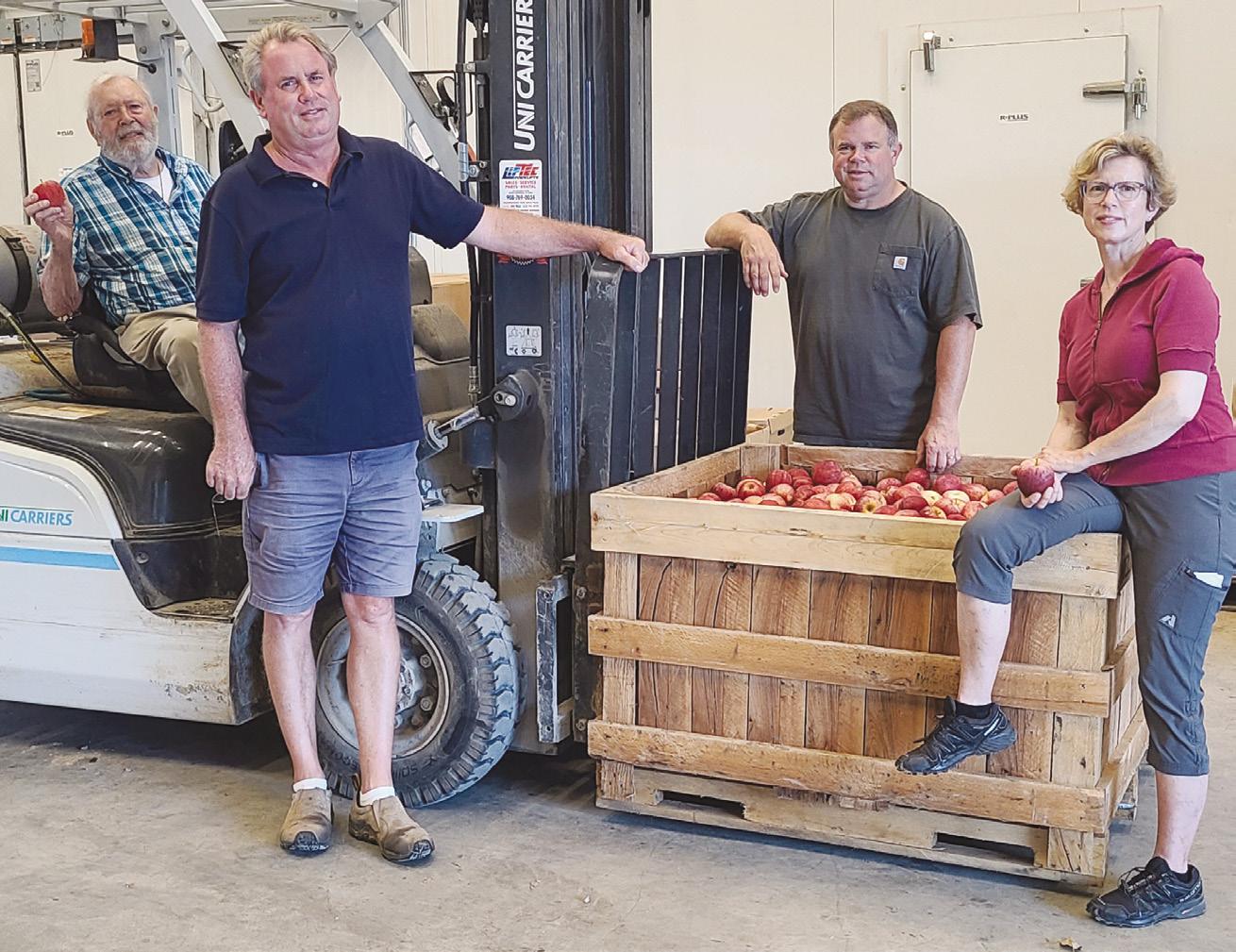

 By Diana Dove Environmental Educator
By Diana Dove Environmental Educator

The beauty of a family gardening together goes far beyond the flowers... there are immeasurable benefits for adult family members and their Growing Gardeners. Whether a family gardens at home or in a community garden, each family experiences immediate and longlasting benefits. A family grows with their garden as family bonds are strengthened while spending time together outdoors
When gardening with children, the garden should be a safe, happy, comforting place in an atmosphere filled with positivity, discovery, and wonder. Several of our school volunteer families include preschoolers and elementary grade students. I never saw so many kids who loved weeding and told me so! One third grader exclaimed, “I’ve been looking forward to this so much! I love weeding!” The enthusiasm is contagious, filling the garden with laughter as family members work together as a team, learn together, and become garden stewards, gaining knowledge as they become experienced gardeners. Children are proud of what they and their families accomplish in a garden.
Gardening outdoors increases the time a family spends in nature, giving them the opportunity to observe and become more aware of their environment while having fun together. Though gardening is hard physical work, it should be fun too. We rotate short garden tasks for families with young children who have short attention spans. Teens, however, often prefer to stick to one task until it’s completed. I’ve observed how young children love to dig, for a short time, but always prefer
to plant. Our “spotted lantern fly roundup” using plastic jars, strategy, and practice have been challenging but... fun as we learn about invasive insects and how planthoppers hide and hop. As parents and grandparents garden with children, they spend quality time together. As previously mentioned, there is an important bonding that occurs between those who garden within their family.
I’m surprised how much exercise families get while gardening. There’s walking, stretching, pulling, twisting, lifting, stomping, sweeping and much more. With health apps or a pedometer, the number of walking steps can be measured. I often remind children to walk, not run, in the garden... Digging holes or shoveling mulch is good exercise. Adults must monitor children filling wheelbarrows with mulch to prevent overfilling. Level the mulch in the full wheelbarrow to keep it equally balanced. Young children need to be reminded to take their time when maneuvering the wheelbarrow to keep it from tipping... so that’s happened, more than once.
Some studies report that increased physical activity while gardening helps children, and adults, get better sleep. A child with a good night’s sleep performs better in school and is better behaved. I have observed how relaxing gardening can be for families. It’s a chance to tune in to your senses. How fortunate we are that our school/community garden is in a place where we might hear the call of a hawk or watch turkey vultures soaring overhead. There are goldfinches feasting on seeds and catbirds singing near their nest in the garden. When dusk begins to approach as we are cleaning up our summer gardening sessions, the
katydids and crickets serenade us. Sometimes we stop, sit, and listen to the sounds of the garden. A garden can be a peaceful place to relieve stress and simply breathe deeply.
The Tobias family who gardens at home and at school with a third grader explained, “We enjoy selecting different kinds of flowers each spring that we will plant, and we enjoy working and planting together as a family. Daddy enjoys eating our own fruits and vegetables that we grow; they taste so much better from our own garden.”
From the beginning of the season, it’s smart for families to practice good habits with tool safety and thoroughly clean up their gardening area. Environmentally, families are encouraged to garden sustainably and to never litter. We emphasize “leaving no trace behind,” and “leaving outdoor spaces cleaner than you found them.”

Eight-year-old Alexandria said, “I like to garden because I love to watch flowers grow.” She gardens at home and says, “I like to pick the fruits when they’re ripe.” Studies show that children who grow their own vegetables are proud of their accomplishment and are more likely to eat a healthier diet. At this young age, she exclaimed, “There’s so much to do and anyone can do it!”
Those who do not have access to an outdoor garden can set up a windowsill garden indoors. Arrange potted plants under a plant light. Grow plants in containers on a balcony. But most important, make it a family project. Families who garden discover that gardening can bring a family closer together in an activity that is healthy, fun, and enjoyable, creating Growing Gardeners for the future.
Editor’s Note: Diana is an Environmental Educator with award-winning programs for all ages who has been teaching since 1975. She can be reached at dianadove13@gmail.com She currently co-teaches, “Wildlife & Litter” programs with her husband Mike that are free to NJ groups when sponsored by Clean Communities. This includes guided nature walks, pond studies, education booths at town festivals, and outdoor programs for youth & adult garden clubs, schools, camps, libraries, and service organizations with a message about not littering. She is a former Sr. Naturalist for Somerset Co. Parks. In October, 1996 Diana founded a schoolyard, wildlife habitat garden at Memorial School in Washington Boro, Warren County, NJ. Please ‘Like” the FB page of the Karen Nash Memorial Butterfly Garden. Diana volunteers as Youth Chair on the Bd of the Garden Club of NJ and is a First Place National Winner of the NGC Youth Leader Award. She has a BS in Forestry & Wildlife Mgt, with a concentration in Biology, plus a BA in Communications from Va Tech.

Today’s apples are used in many delicious recipes.
Ingredients:
8-10 Apples
1-2 T Lemon Juice
Preparation:
Preheat oven to 350 degrees.
(Continued from page 24)
Topping: 1 Stick Butter
¼ Cup Sugar
¾ Cup Brown Sugar
¾ Cup Flour
Crumble topping ingredients together in a bowl, set aside. Peel, core and slice apples, add lemon juice to prevent browning. Place apples in a 9x13” pan, cover with topping, sprinkle cinnamon over top.
Bake for 30 mins or until done.
Ingredients:
4 oz Melick’s 1728 Original Hard Cider
1T Flour
1T Apple Cider Vinegar
1 tsp Worcestershire Sauce
Preparation:
2-2/3 oz Ketchup
4 oz Brown Sugar
To Taste Chili Powder TT Paprika
TT Habanero Dust
Add Hard Cider to a pot, put on medium heat. Whisk in flour. Add all remaining ingredients. Whisk Let cook for 1 hour. Check seasonings.
October 28, 2023 Eastern Daylight Savings
Ingredients:
1.5 Cups Oil
2 Cups Sugar
3 Eggs
1 tsp Salt
Preparation:
1 tsp Cinnamon
1 tsp Baking Soda
1 tsp Vanilla
3 Cups Peeled, cored thickly sliced apples
Preheat oven to 350 degrees.
Beat oil and sugar together with an electric mixer. Assemble other ingredients.
Add eggs to mixer, beat until creamy.
Sift together flour, salt, cinnamon, and baking soda. Stir into batter. Add remaining ingredients and stir to blend.
Spray angel food/ Bundt pan with Pam Baking Spray, turn in batter. Bake for 1 hour, 15 mins or until done. Cool in pan before turning out. Sift confectioners’ sugar over the cake.
Editor’s Note: Peter Melick is co-owner of Melick’s Town Farm in Oldwick and a 10th-generation New Jersey farmer. Peter is a member of the Tewksbury Township Committee, Hunterdon County, NJ. He also served as a director for the New Jersey Farm Bureau and is a past president of the New Jersey State Board of Agriculture. Peter has also been featured on NJN, News 12 New Jersey and on the Fox Business Network.
The Premier Gardening Monthly Newspaper Number 246 Published Monthly
RESERVE AD SPACE
Website: www.GardenerNews.com
E-Mail: Mail@GardenerNews.com Staff Executive Editor/Publisher ..... Tom Castronovo Art Director ................. Susan F. Kessel Advertising .................. Tom Castronovo
October 2023
October 2023 Contributing Writer Hubert Ling
Gardener News is published monthly by Gardener News, Inc. 16 Mount Bethel Road #123 Warren, NJ 07059


The Gardener News invites correspondences on gardening subjects of interest. Gardener News, Inc, and its Publisher reserve the right to accept, refuse, or discontinue any editorial or copy, and shall not be liable to anyone for printing errors, misinformation or omissions in editorial or copy. The information contained in articles herein represents the opinions of the authors and, although believed to be accurate and complete, is not represented or warranted by Gardener News, Inc. to be accurate or complete.
All advertising is subject to the Gardener News advertisement rates, and must be PAID IN FULL at time of submission. Publisher reserves the right at its absolute discretion, and at any time, to cancel any advertising order or reject any advertising copy whether or not the same has already been acknowledged and/or previously published. In the event of errors or omissions of any advertisement(s), the newspapers liability shall not exceed a refund of amounts paid for the advertisement.
NOTE: All editorial, advertising layouts and designs and portions of the same that are produced and published by Gardener News, Inc., are the sole property of Gardener News, Inc. and may not be reproduced in any form unless written authorization is obtained from

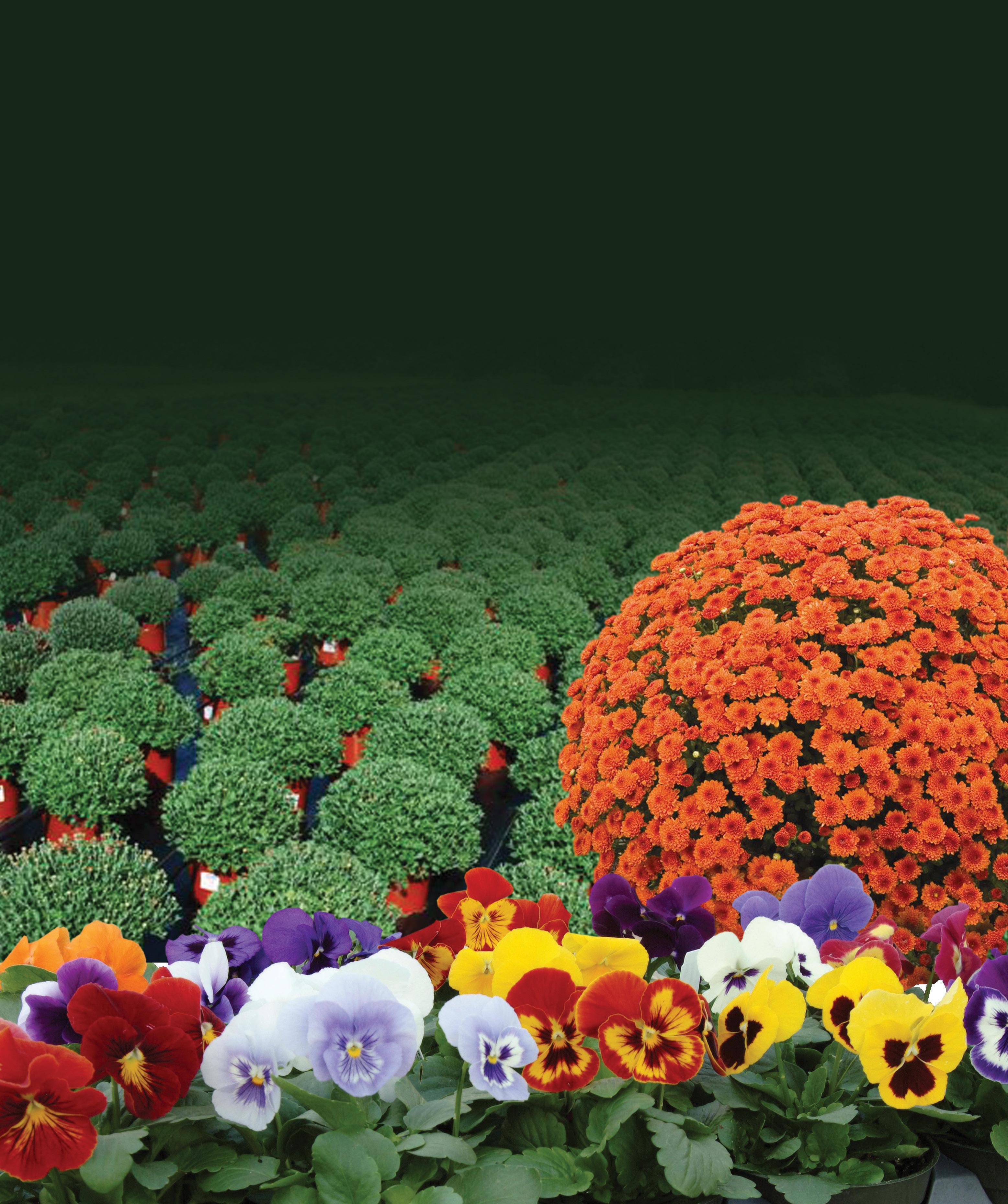


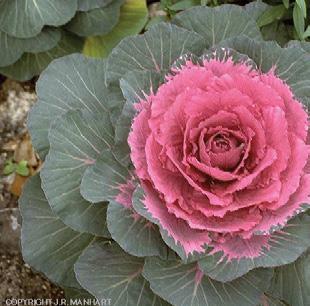
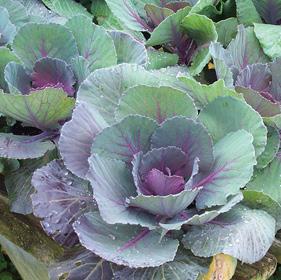
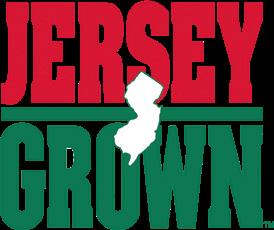
POWER TRX HEAVY-DUTY
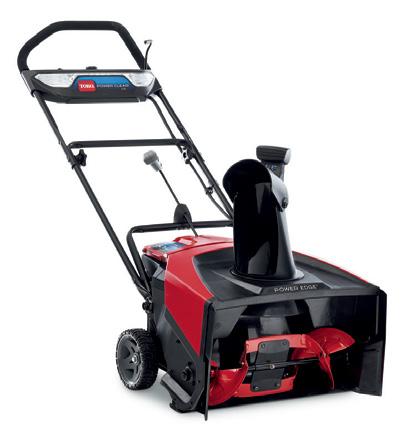
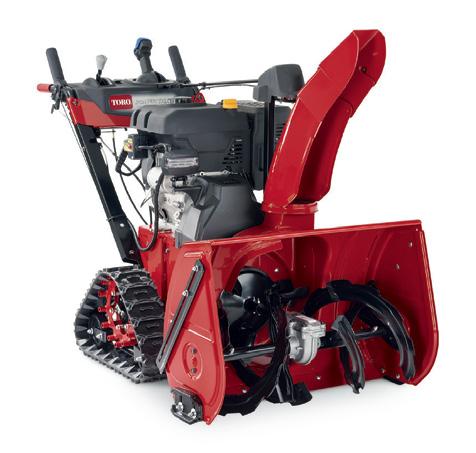
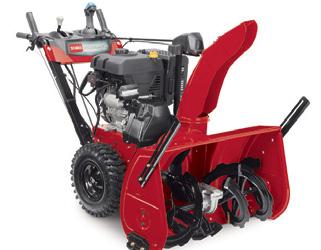
28” I 32” TRACKED TWO-STAGE SELF-PROPELLED HYDROSTATIC TRANSMISSION
TRACKS PROVIDE INCREASED STABILITY FOR TOUGH SLOPES AND STEEP TERRAIN

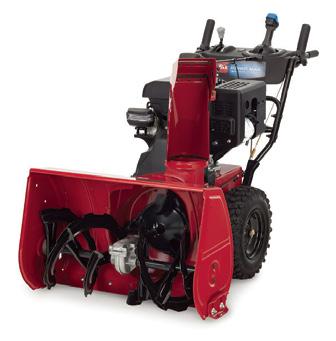





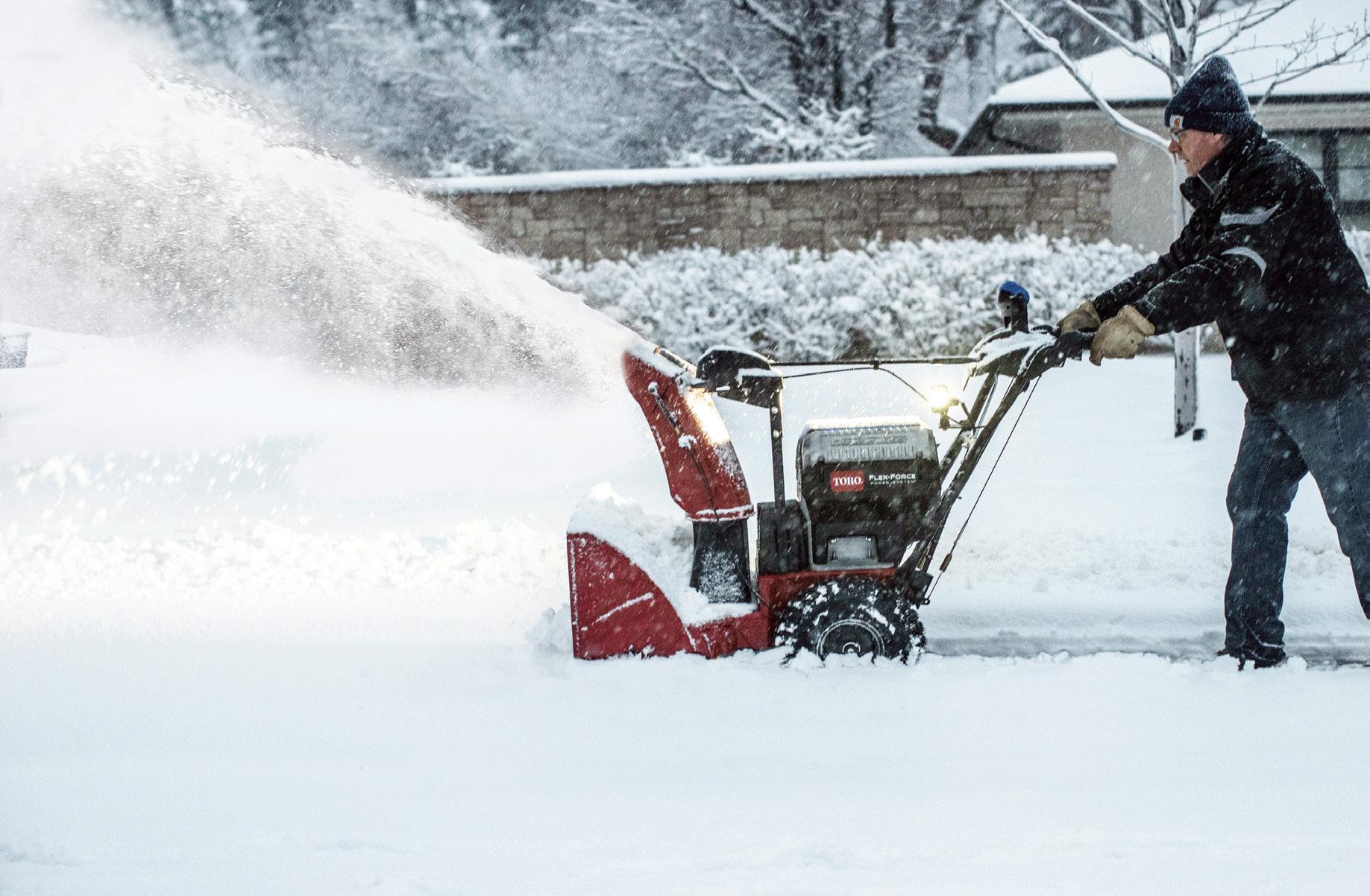
POWER CLEAR® 21” COMMERCIAL SINGLE-STAGE EXTENDED LIFE PADDLES AND REINFORCED HANDLE

POWER MAX® HD
28” I 32” COMMERCIAL TWO-STAGE CAST IRON SKID PLATES AND DRIFT CUTTERS
GRANDSTAND®
MULTI FORCE™
WITH BOSS® 48” OR 60” SNOW BLADE,
